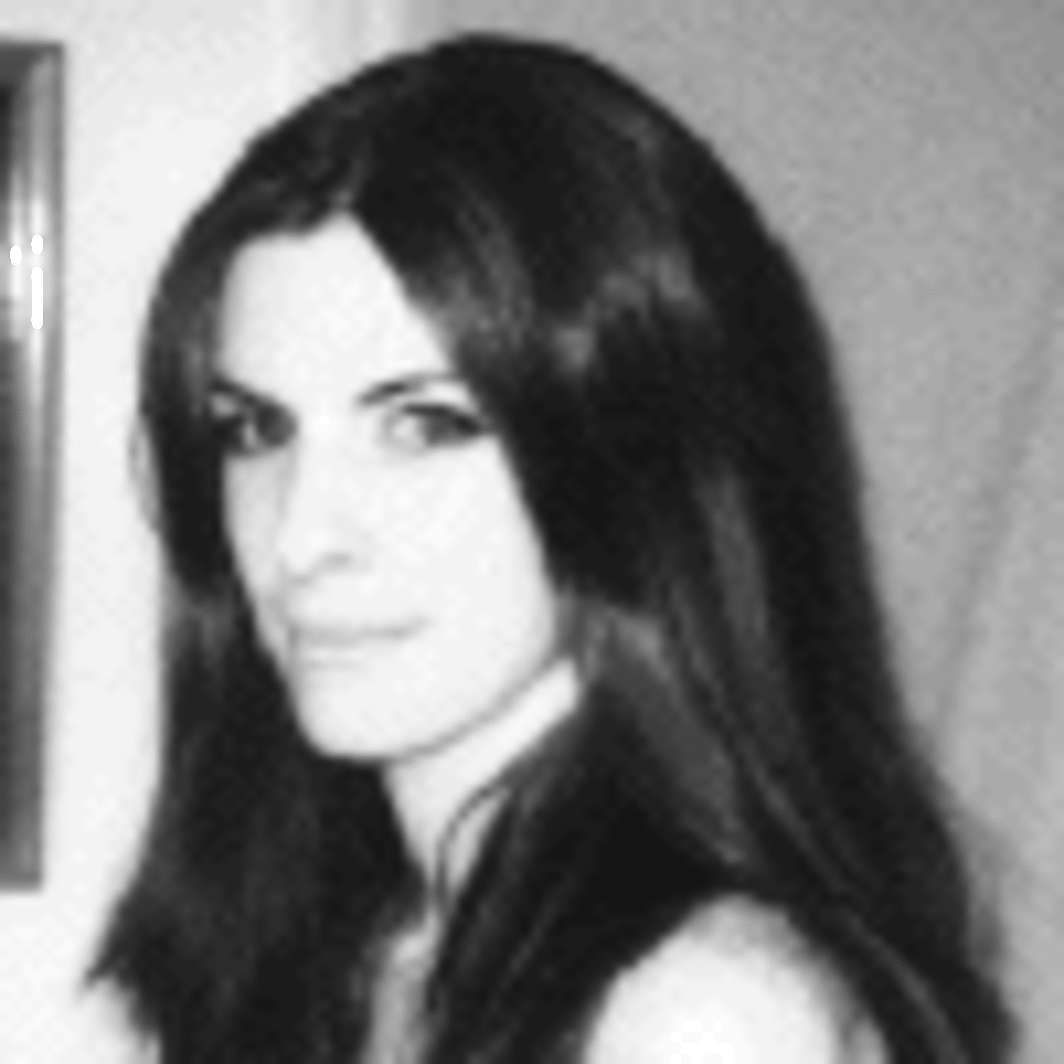
‘Late in 2007, I went repeatedly to Tate Modern’s exhibition The World as a Stage, primarily to see one small black-and-white photograph – or, rather, a series of 31 small black-and-white photographs presented one at a time and, as per the artist’s instructions, rotated daily: Trisha Donnelly’s The Redwood and the Raven (2004). The experience of this staggered, witchy display, which documents the headscarf-wearing dancer Frances Flannery performing, against a tree in a forest, a dance called ‘The Raven’, choreographed to Edgar Allen Poe’s eponymous 1845 poem, was borderline perverse: you couldn’t grasp the moves, hear the poem or precisely remember the previous images you saw, so that the additive melded continually with the subtractive. (The raven in the poem famously answers queries with ‘nevermore’.) You wanted more, aware that the more you got would equate to less. This, I already knew, was the American artist’s conceptual wheelhouse: earlier that year, in Manchester, I’d seen her deliver a drum-pounding, soprano-screaming, incantatory performance, The Second Saint, at Hans Ulrich Obrist’s and Philippe Parreno’s performance-art extravaganza Il Tempo del Postino, a fully confident yet, for all its noise, muted display, ending with the fall of four black obelisks, that resides in my memory as a roaring blank abstraction.
‘Hers is a chess-playing art, one of timing and artfully mobilised viewer psychology
‘But then methodically parsing the actions, objects and images proffered by the forty-year-old, San Francisco-born Donnelly, who has now returned to London with a solo exhibition at the Serpentine Galleries, is not really the point. Thinking about them as interacting systemic units and conjectures about shaped reality, the fungible nature of space and time, and the strictures of art reception is more fruitful. Hers is a chess-playing art, one of timing and artfully mobilised viewer psychology; or at least that’s where it starts. In her New York solo debut at Casey Kaplan in 2002, Donnelly rode into the opening on a white horse, dressed in Napoleonic garb, and, acting as ersatz courier, delivered the oration that the French emperor supposedly should have given at the Battle of Waterloo: ‘If it need be termed surrender, then let it be so, for he has surrendered in word, not will. He has said, “My fall will be great but it will be useful.” The emperor has fallen and he rests his weight upon your mind and mine and with this I am electric. I am electric.’ (Eyewitness critic Jerry Saltz wrote that here Donnelly ‘stole my aesthetic heart’, while reckoning that the performance rather outweighed the show itself.)
‘By 2005, Donnelly didn’t even require a real horse; stage-managed rumour was enough. At the opening of a show at the Kölnischer Kunstverein celebrating a major artist’s prize she’d won, word ‘got around’ that another steed was waiting somewhere in the institution, that Donnelly would perform – and the artist, curator Beatrix Ruf remembers, left the preview dinner a few times to reinforce the idea. It never happened, but the very possibility coloured the event. This, in microcosm, is what Suzanne Cotter has called Donnelly’s ideal of the ‘uncontrived encounter’, something Donnelly herself calls ‘natural use’ and which is the carefully controlled outcome of so much of her work (which, in a gesture of imperial defeat that is also a gift, then abdicates control): a process that, though the description may sound hyperbolic, comes closer to a suggestion of opening up space and time, with visibly disproportionate means, than almost any of Donnelly’s contemporaries. See, for example, Hand That Holds the Desert Down (2002), in which a black-and-white detail of one of the paws of the Great Sphinx at Giza flips, via titling, into a vertiginous recasting of gravitational reality, though a proposition whose supporting wires are blatantly evident.
‘Donnelly’s art has prowled, avoiding resolution, around stormy transcendence from the outset: the first work of hers I remember seeing (and not being particularly struck by: her work has to accrete in the mind) was Untitled (Jumping) (1999), made before she graduated from Yale in 2000, in which she imitates, while moving in and out of the video frame, a variety of musicians in states of musical rapture. Her art since, which encompasses soundworks, actions, lectures, drawings, sculpture, photography and more video, continually stresses the possibility of – to quote the Bard – there being more in heaven and earth than is dreamt of in our philosophy. Or in our artworld, which has a schizoid relationship nowadays to the esoteric and occult, liking it when historical – Hilma af Klint, say – but not so much when offered without irony or a sense that certain ancient fires haven’t yet gone out. The thematic framework Donnelly has set up charges even her most outwardly slim works with electricity and expansive portent. The Napoleon theme, for example, continued in The Vortex (2003), which featured a recording of the Slavyanka Russian Men’s Chorus singing Lermontov’s poem ‘Borodino’ (1837), named after a gruesome battle of the Napoleonic wars. What this added was perhaps just another line of code, though it also aimed at an experience of synaesthesia (see the anticipatory text ‘The Vortex Notes’, 2002, which advised following the highest male voice and feeling it ‘compress like a photograph’) and dragged a vast historical event into the artwork’s orbit, resituating it in the twenty-first century as a question that is particular and also diffuse. Her sculptures involving carving into quartzite, she’s said, relate to ‘the enacting of processes of loss in geological time’: entertain that, and millennia fall away as you look.
‘The thematic framework Donnelly has set up charges even her most outwardly slim works with electricity and expansive portent
‘Or, rather, they might. Again, it’s characteristic of Donnelly’s art that one simultaneously falls under the spell and has a sense, related to critique, of how the spell is cast. What’s likely is that no spell at all, or at best a pale shadow of a spell, is cast if this art is received secondhand, and here her work twists uncharacteristically polemical. In an age where so much art is experienced – if that’s even the word – through online aggregators and through documentation, Donnelly’s art insists on being taken in real time and real space, so that it can ask what those things even are. It’s presumably to this end that she has given up doing interviews – we asked, and were politely rebuffed; a 2010 in-gallery interview she did with Anthony Huberman apparently most often featured the response ‘pass’, with Donnelly playing tracks from her iPod in lieu of other answers – while her catalogues don’t usually feature essays and her press releases can veer strongly away from the interpretative. When a visitor attending her 2002 Kaplan show requested more info, he or she would be played some electronic beats. The PR handout for her poised, codified-feeling 2010 exhibition at Portikus, Frankfurt, with its sequence of leaning incised marble reliefs, drawings and video, purports to be a press text but is a list of titles and media.
‘Art today comes with an accompanying explanation that actively disarms the viewing experience, rationalising appears to be the last thing Donnelly wants
‘This matters: one might wish it to be exemplary, except that it is turf that Donnelly almost owns and that, to mix metaphors, would become hackneyed fast. So much art today, as we’re all aware, comes with an accompanying explanation that actively disarms the viewing experience, rationalises it, and rationalising appears to be the last thing Donnelly wants: her art, in its myriad margin-directed speculations, says there’s too much of that already, and not enough that, to paraphrasTrisha Donnelly @ Air de Parise that horseriding ensign, really rests its weight upon your mind and mine. Think for a second about how few artists actually sustain this quality of tactical, shape-changing surprise and risk. David Hammons would be one, Lutz Bacher another; there are not that many others. Meanwhile galleries and fairs clog with frictionless production lines. Donnelly operates, conversely, a continual transitive process, new works adjusting old ones, the full picture held back: Black Wave, a 2002 photograph of a wave about to crest, feels like it might be metonymic both in its minimal ominousness and its forceful incompletion.’ — Martin Herbert
___
Further
Trisha Donnelly @ Matthew Marks Gallery
Trisha Donnelly @ Air de Paris
The Beguiling Desolations Of Trisha Donnelly
Trisha Donnelly Sculpts in Four Dimensions
Trisha Donnelly by Katherine Siboni
OPENINGS: TRISHA DONNELLY
Trisha Donnelly’s inscrutability is legendary.
Trisha Donnelly Mixtape
Wavelength: On Drawing and Sound in the Work of Trisha Donnelly
The Image of Trisha Donnelly at Matthew Marks
If It Need Be Termed Surrender: Trisha Donnelly’s Subjunctive Case
Trisha Donnelly and the Infinite Potential of Video Art
____
Extras
Trisha Donnelly
trisha donnelly looped 4 times
________
Interview
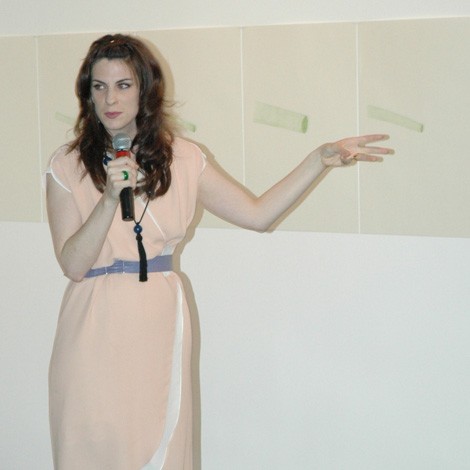
Hans Ulrich Obrist: The interview happens now at the corner of rue Jacob and rue Bonaparte. Already this interview goes completely circular and reminds me of your favorite message from The Young Ones [British TV series, 1982-1984].
Trisha Donnelly: Oh yes. “Meanwhile, the next day.” It’s a break of narrative formula, usually for film, TV or radio. Something is happening in the plot and normally the device is to say, “and the next day” or “meanwhile in Paris” or “meanwhile in Los Angeles.” In The Young Ones, in between the change of a scene, all of a sudden it says, “meanwhile, the next day.” It reversed the function after that, but of course then you realize the next day is the projected idea of the next day.
HUO: Rirkrit Tiravanija would say “tomorrow is another fine day.” It’s a very Buddhist sentence.
TD: It’s true. But then you don’t have a past but you have a future. So “meanwhile, the next day” I think is a simple validation of the space and time continuum suggestion.
HUO: You said this is a totally historical and indestructible idea.
TD: I think that when you have a phrase that names the next day as being the past it is completely indestructible. Once you say that tomorrow is the past, it is indestructible. The duality of any day is that it is bookended by the ideas of the previous day and the day to come. In some ways it seems our memory is much simpler than we think, so we project memory into the future. We have a memory of the future…
HUO: Recently Stephanie Moisdon curated a show that included your first piece. Can you tell me about it?
TD: It was called She Said (1989). Funny. I was sixteen and came to understand the object nature of “ ”. If you have words and they are said, then they are said and they stay in the environment like a load of mass. She Said is about the first time I understood that; it was the same sensation as mass. So it’s the side of a chair and it just says “She Said” painted on it.
HUO: Could you talk about your drawings?
TD: I think that they relate to objects the way that you listen to the radio, if you have a radio on. I draw when the radio is on. When I’m drawing, I just wait a really long time because I have to do the right thing. So I don’t draw all day, but when I have the thing I am supposed to be drawing, I draw all day and all night.
HUO: It comes from an object or it comes from an idea?
TD: Both. Sometimes it comes from the sight of an object; sometimes sight is virtual. Some of the objects are sounds; some of the sounds are drawings, but I think that the drawings that I do are more of a physical realization of what I am thinking of than of myself (i.e., an action). Drawings can be a more intense version of the presence I think. They can act as actions. They are worse. More horrible. More distant.
HUO: We have [Musée d’Art Moderne, Paris] two drawings published in the catalogue I Still Believe in Miracles. Can you tell me about them?
TD: Well, one is Untitled. This drawing is of an extinct object, which is this specific act of unlatching on a leg. It’s an action that is extinct because people don’t know how to put them on or take them off anymore because they are not worn. Every time somebody would ask at the place where it was shown, “What is that?” the person who works there has to show them: “it is…” So Untitled is that. And the other one is The Vortex (2001), which is the beginning of something I understood very simply with physical space. You know when some people see the color red they have a fit, which they think separates them from the normal world. It’s a physical response to the visual. So the vortex is something that I have understood as one of those thresholds.
HUO: Rupprecht Geiger, the more than ninety-year-old German painter, for many decades developed an almost obsessive attraction to the color red. There is a physical aspect to red.
TD: I think perhaps red is our most physically humanly understandable color because it’s the first time we see ourselves dying. Blood pouring out.
HUO: So The Vortex has to do with perception.
TD: It’s more than that, I think. It’s not even as much perception, but it’s imperceptible motion: you realize that you physically move through the viewable image. The corresponding piece is a demonstration — also called The Vortex (2003) — I did which consists of a Russian song where if you link the highest man’s voice and the lowest man’s voice you can build a vortex in your mind. When I play the song and I state the formula, each member of the audience builds a sculpture in their mind that is like a vortex. So you have hundreds of these built and rendered, point-placed never-ending vortexes in people’s minds. Hundreds of sculptures. I consider it more of a sculpture. A mass.
HUO: The drawing is a trigger for vortex. It is not an object in this regard.
TD: It’s not. But a vortex is never an object; it’s something else. We don’t have a word for this. It’s the same problem when you don’t have a word for “not performance.” It is not performance.
HUO: Cartier-Bresson told me the last time I interviewed him: “Photographs should be more seen in books than polluting too many walls.” The same thing is true for the way you use drawings and photographs; they are rare instances. It is against pollution.
TD: Yes. I think polluting something displays that you are sure of things and mortally terrified. Every time you make a piece of work you have to ask if it really needs to exist in the world and should you do the deed of adding more shit to the world. I write every day; that’s more where I do my everyday obsessive habit.
HUO: So, the writing, the texts are a daily practice for you.
TD: Yes, the texts. They also take a long time. Sometimes I begin a text one year and then I finish it in four years.
HUO: I am very interested in this link from art to literature and poetry because art has created all kinds of bridges in the recent years to music, to cinema, but the link to literature is too rare. Your own is a very rare instance of bringing back that link to poetry, and what is interesting is that poetry is maybe the only art form that has not been recuperated by the market.
TD: It never will be. The only time it had a possibility was in advertising, which has beautiful stuff sometimes. But poetry has regained its status in a way: as people believing that it has a compression that is important. It’s both horrible and perfect simultaneously.
HUO: And you are a native daughter of San Francisco, which is a city of poetry; I think of City Lights Bookstore and the whole beat generation. Have these people been important for you?
TD: No, actually, not at all. I was not so much a beat fan. Unless you could call Gertrude Stein a beat. But it’s a different temperament.
HUO: And who are your heroes in poetry?
TD: I love Ahkmatova, Marianne Moore, H.D., Michaux and I love Yeats because I have an obsession with the Irish disaster, the feelings of disaster. If a text’s category is somehow loosely dependent on structure then so many things can fall into and out of the form. I had a kind of dumb attraction to film moments in poetry. I grew up watching films that were already old. We weren’t allowed to watch TV so we watched John Wayne’s films, Gary Cooper’s films, classic westerns, so I think there would be these epic statements that act as catalysts more than like a constructed poem. John Wayne would walk into a space and say something and then the entire film would shift. The film in this type of action set up is literally built for and around his lines. Set-up lines, to wind its way around the text. The mass of the word. It is kind of like this basic masculinity, mutuality and intensity that are like an explosive statement, the low-grade hesitation and the verbal release. Some films have shorter leashes for this type of thing and make a faster dialogue. Snap you back in quicker. So, if you could build poetry that had a function to move a plot or a story, that was what I found really incredible. But you know I think I was looking for it. I needed to translate it into that structure. It’s text with camera movement built in, understood as part of the formula, like writing with the correct sense of punctuation.
HUO: You film when you travel. You were filming here in Paris too. What about your filmmaking? Is it a daily practice for you?
TD: It’s a daily accidental thing. The camera is palm sized. I never think about it.
HUO: Can you tell me about your bigger photographs?
TD: Some big, some small. The big ones are more like architecture. So polluting with columns. We should have a problem with photography. That’s all I know.
___
Show
Untitled, 2008
video, 4 minutes, looped
Untitled, 2005
DVD, 20 seconds, looped

Untitled, 2011
‘In the final analysis, maybe, numbers, far from facilitating a purely scientific approach, actually contribute to the depth of the world. Like the letters in a novel, they could be seen as constituting not only its secret grammar, its skeleton – the dream of a mathesis universalis – but also its flesh. Not so much marking out time as filling it. With each layer of time a notch to be noted, a stratum of meaning to be read, a space in its own right: gone the distinction between the acts of reading, counting and contemplating a landscape.’
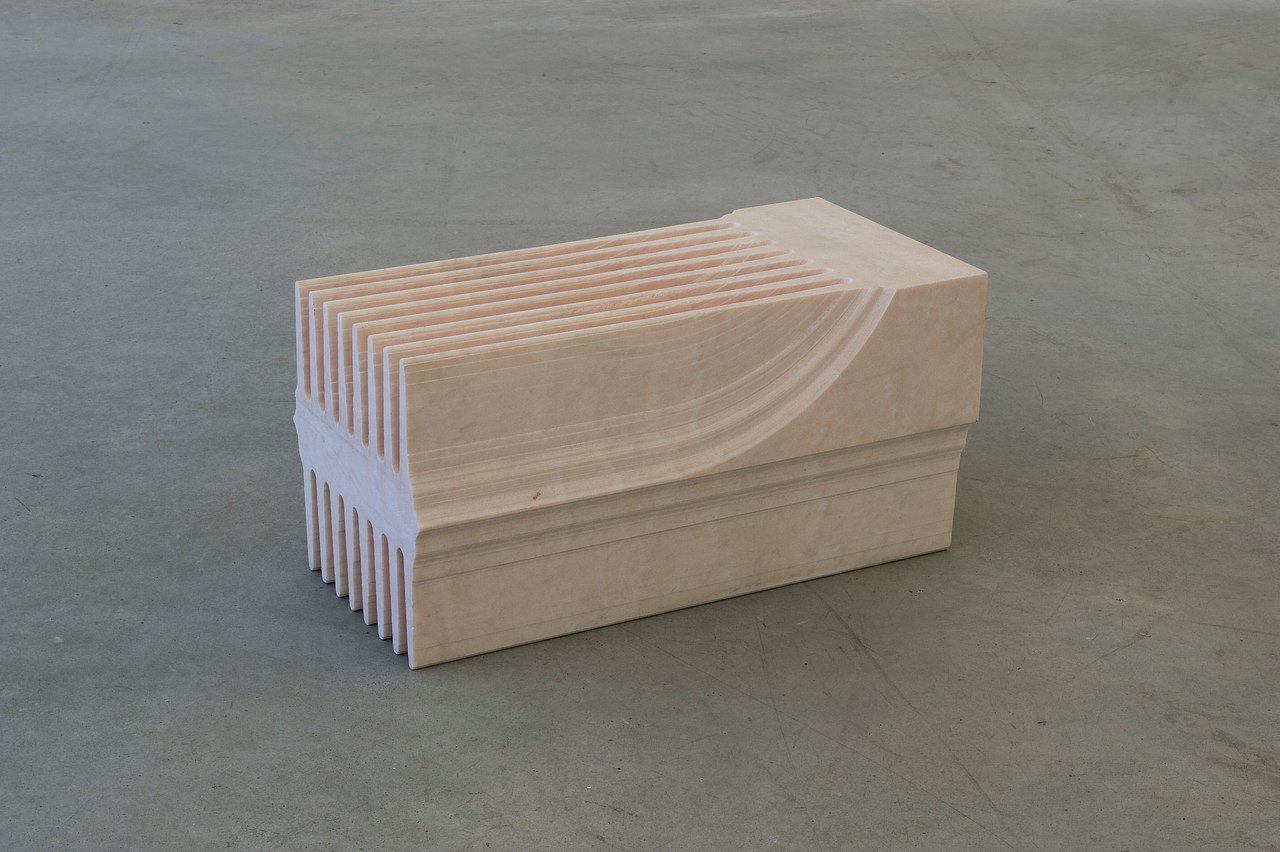

Untitled, 2007
Synthetic polymer paint on paper and pencil on three sheets of paper
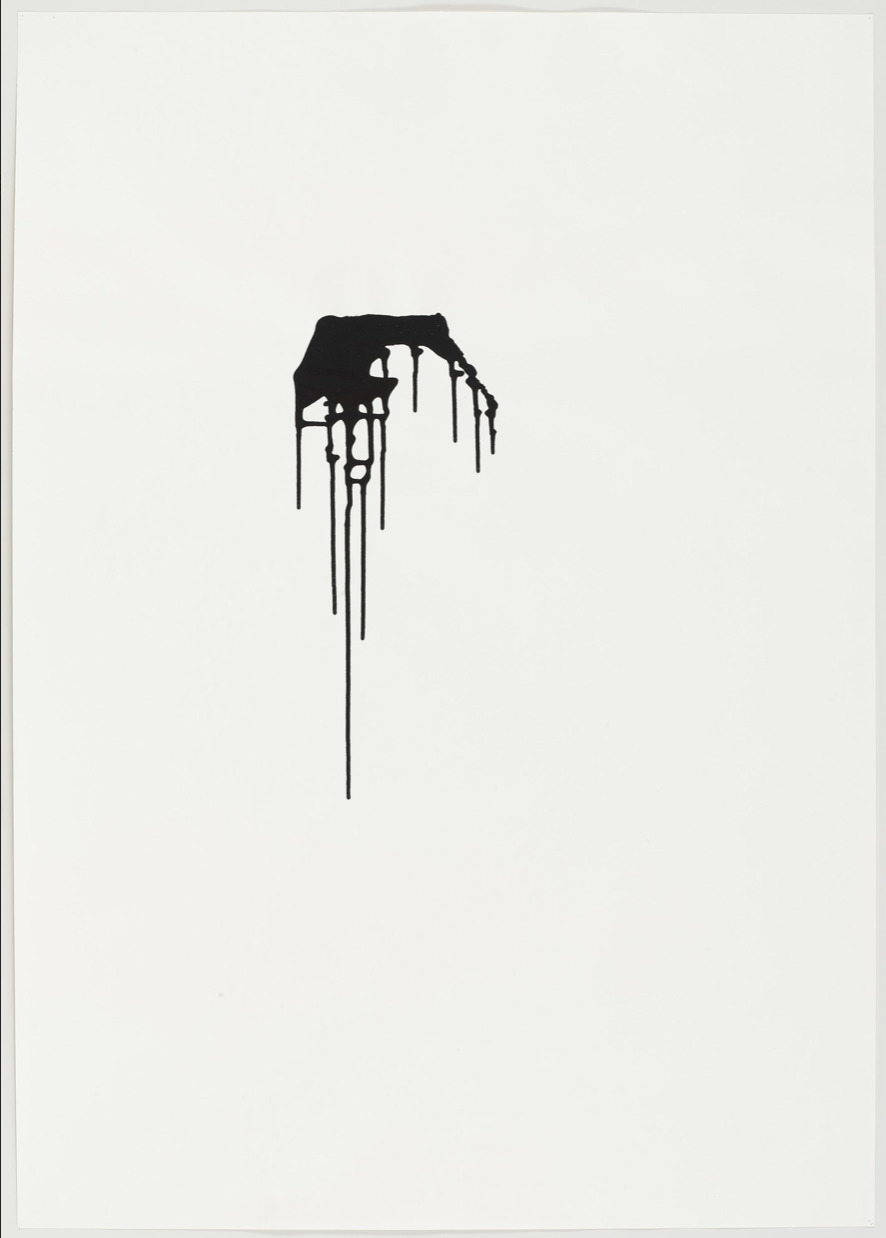
Hand that Holds the Desert Down, 2002
‘In Hand That Holds the Desert Down (2002), a black-and-white detail of one of the paws of the Great Sphinx at Giza flips, via titling, into a vertiginous recasting of gravitational reality, though a proposition whose supporting wires are blatantly evident.’
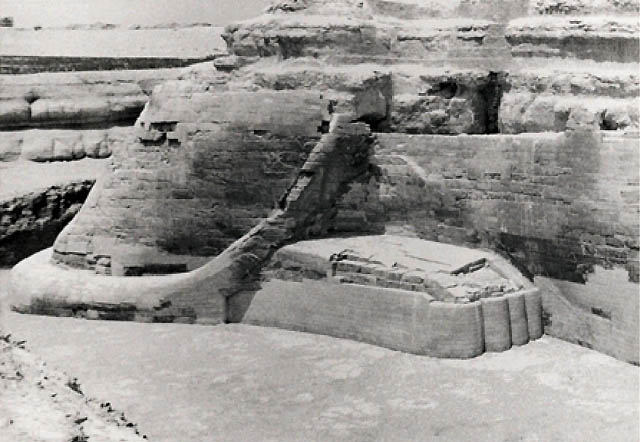
Satin Operator, 2007
‘Across a sequence of thirteen digital prints, the torso of a woman slowly rotates as if photographed in stop-motion: first we see the back of her head, then the side of her face; in this print—the sixth in the series—her eyes meet ours. As her gaze locks with the viewer’s, there is the potential for a brief act of exchange—if only for an instant. To make these images, the artist modified the glass bed of a digital scanner to turn it into a device that would record with an almost three-dimensional, tactile vision.
‘Of her intentions in this series, Donnelly has written, “I thought if you could hit that nexus in the axis of the slow path of two tubular forms either lightening or reflecting (or eating) the projected image, you could expand the thing: into some zone between the film-pattern-flash phenomenon of motion and the paralyzed known of the photographic still. Somewhere in there was a newer dimension I had hoped to catch on paper or file.”’
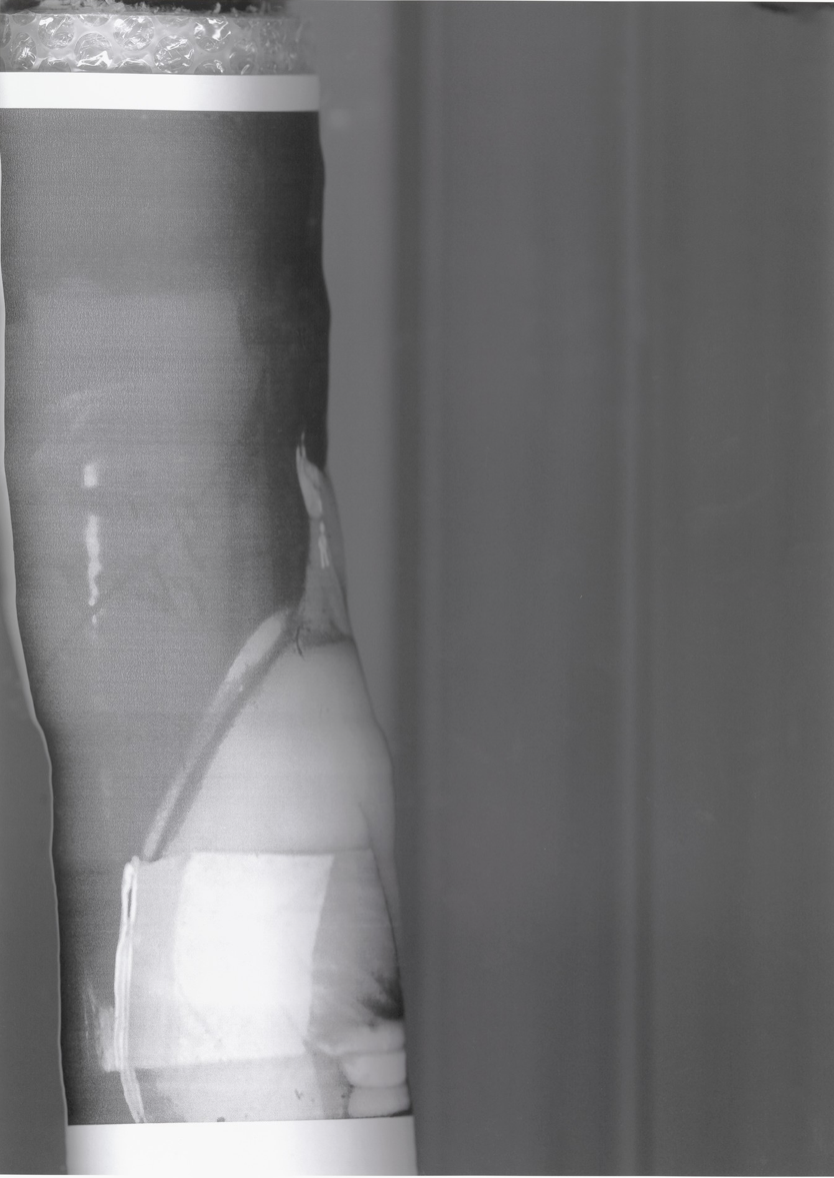

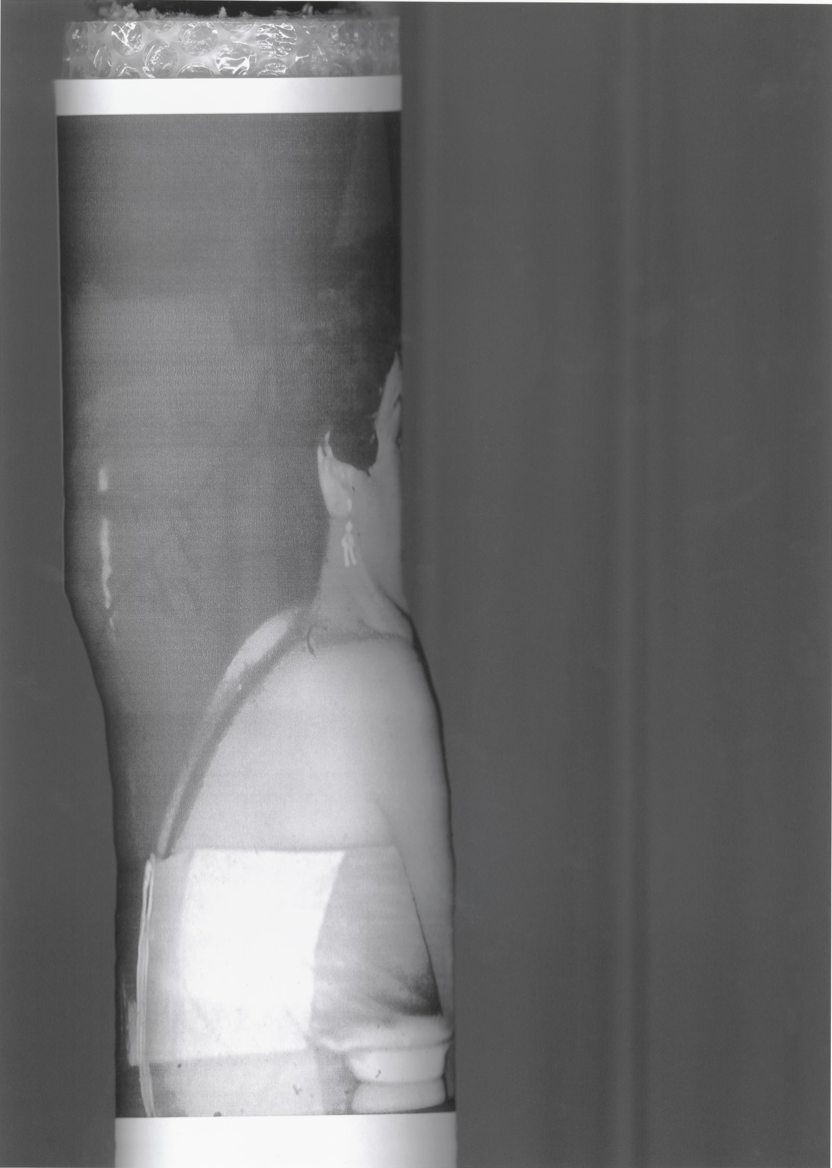
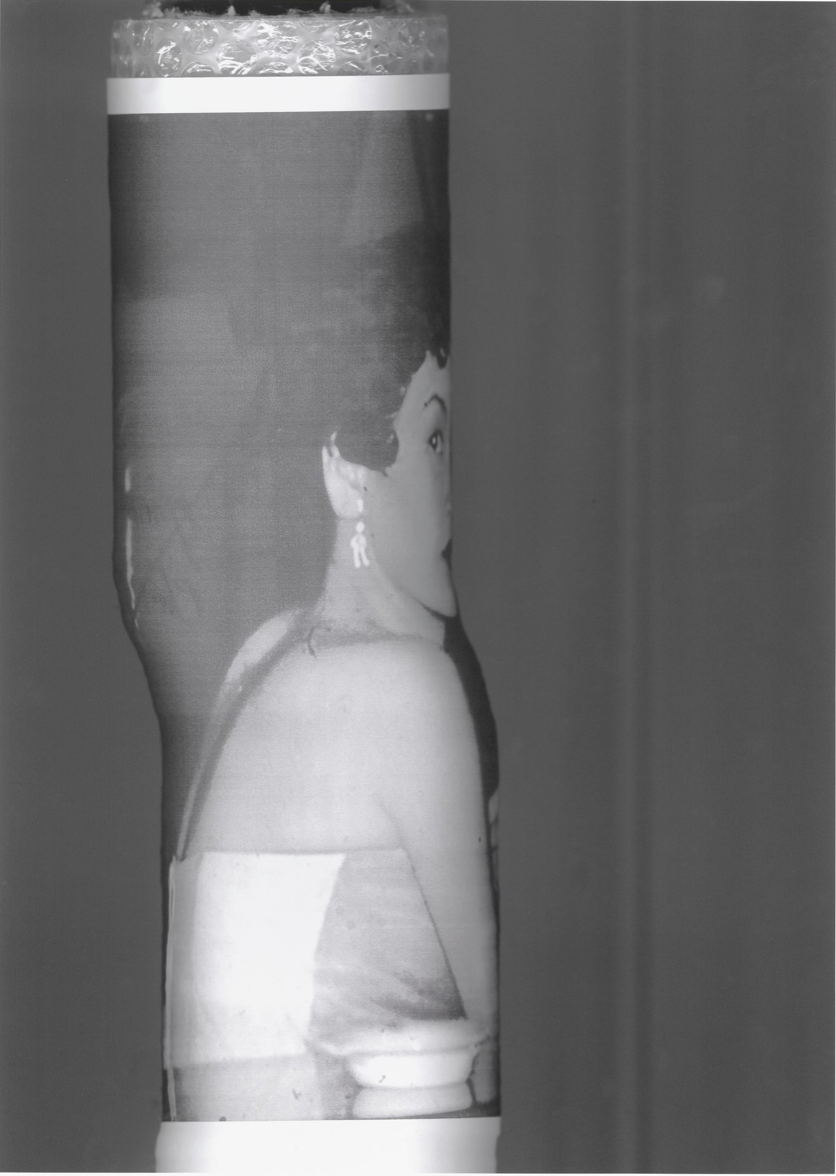
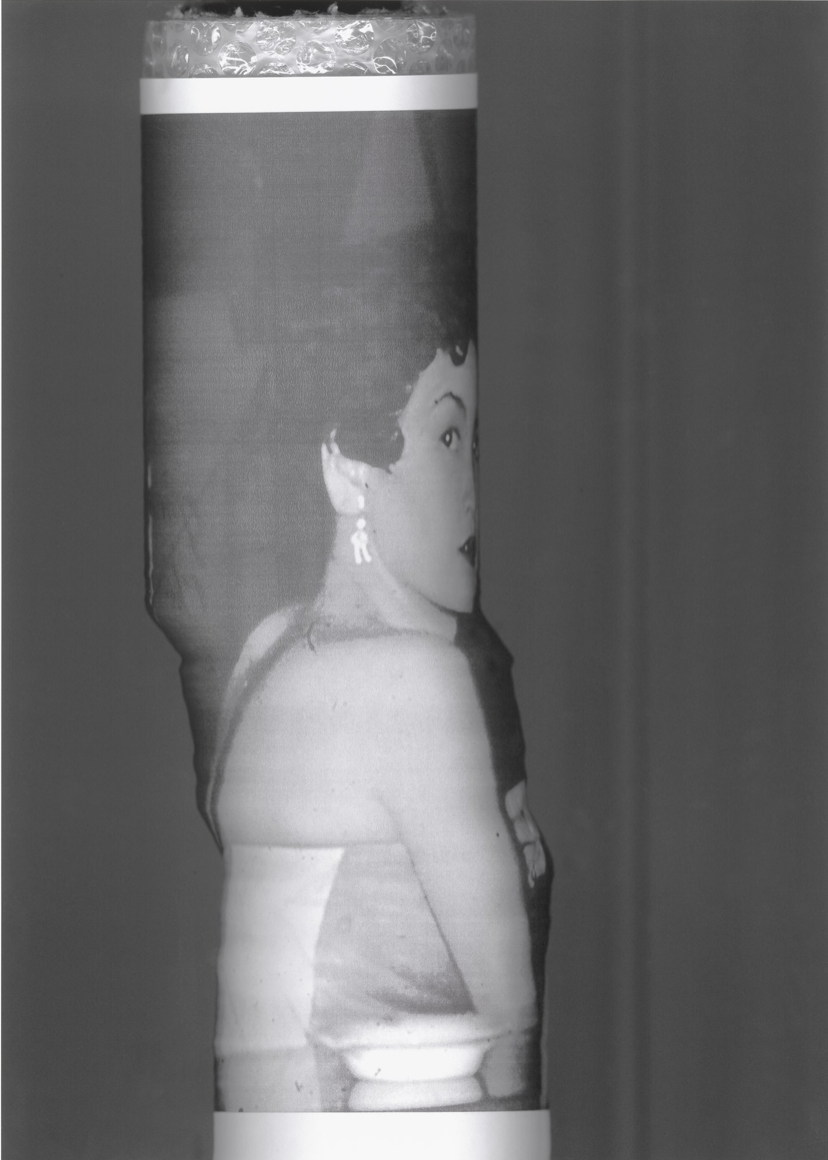
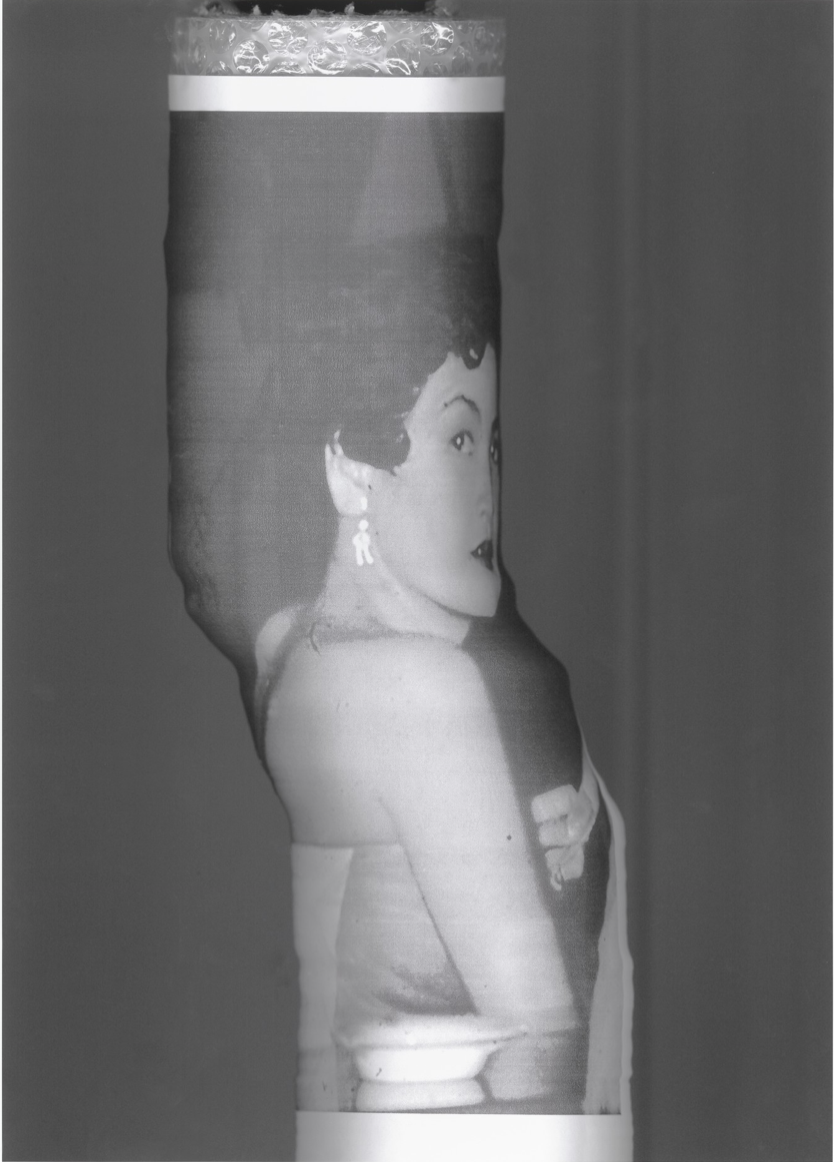
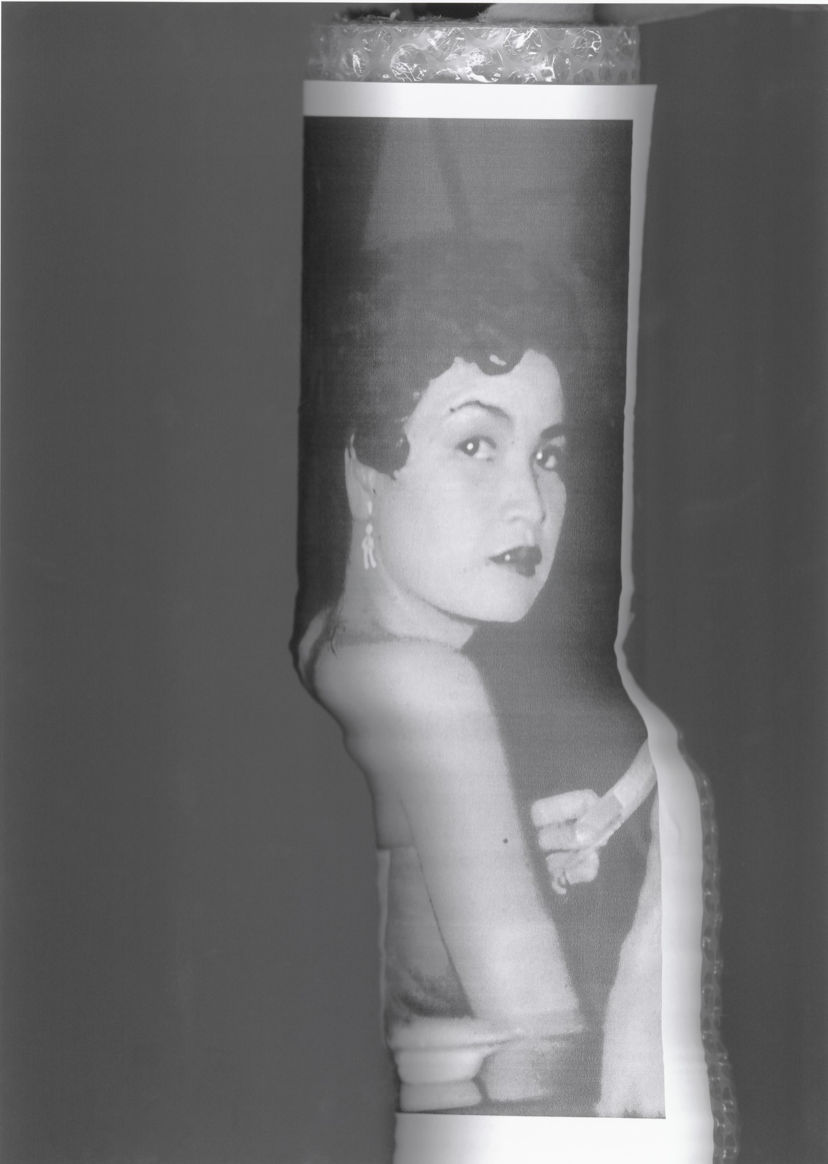
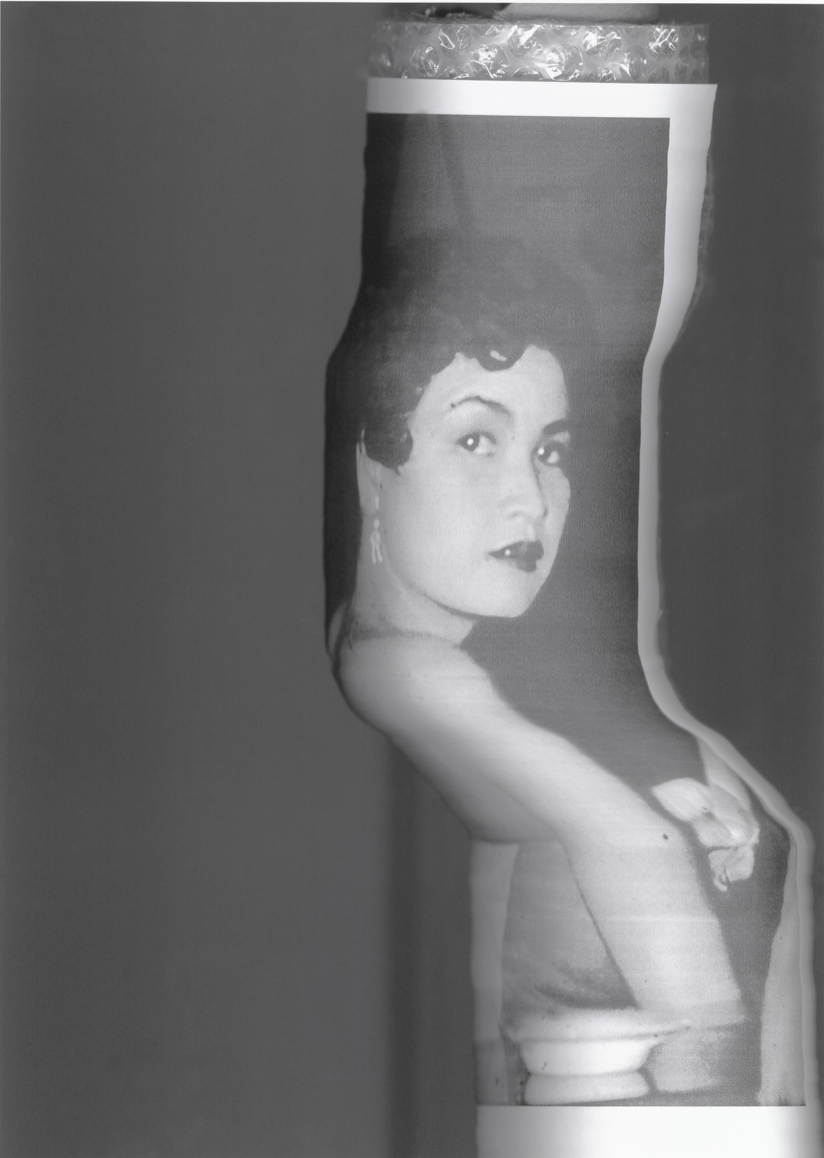
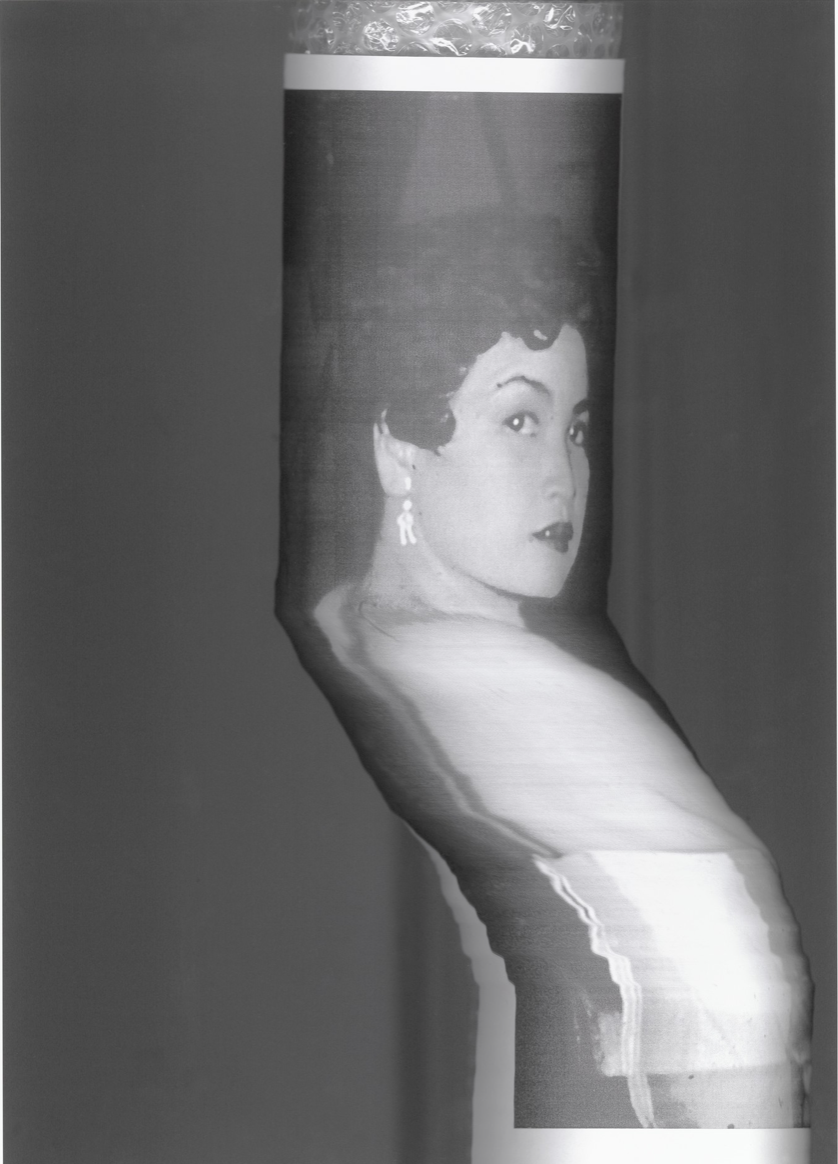
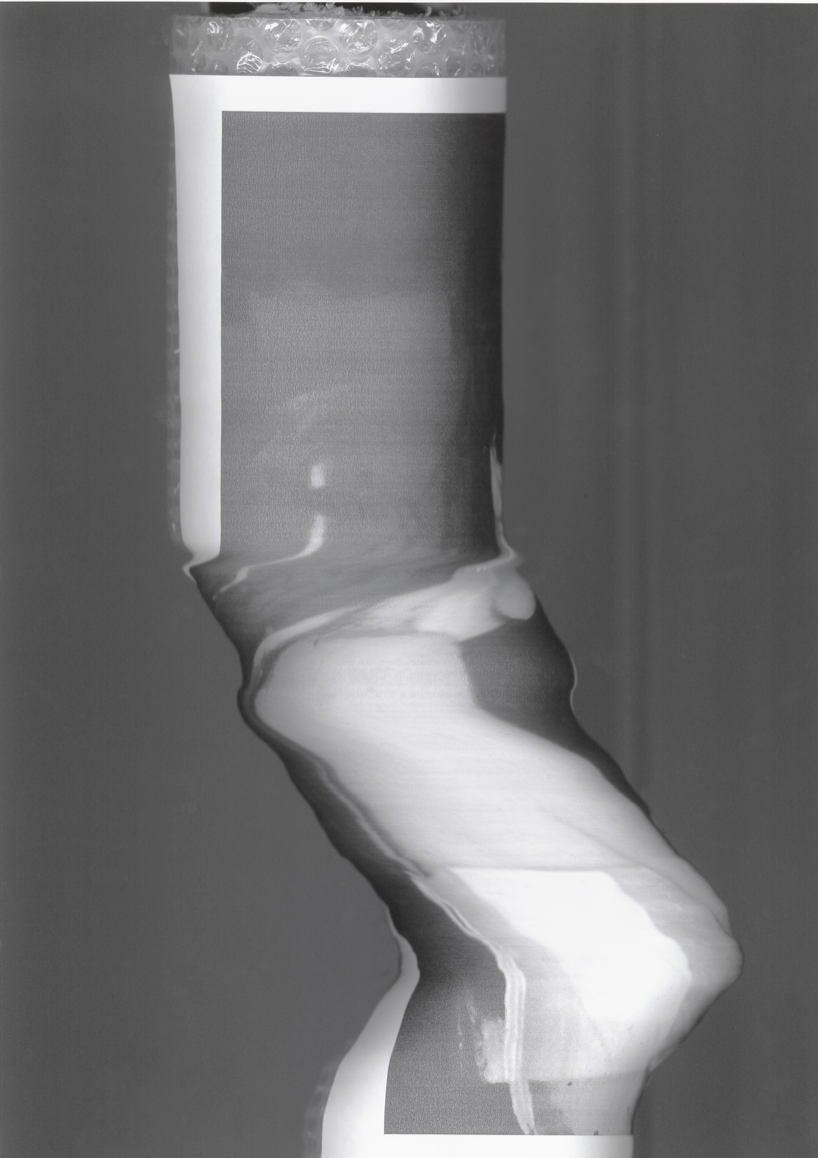

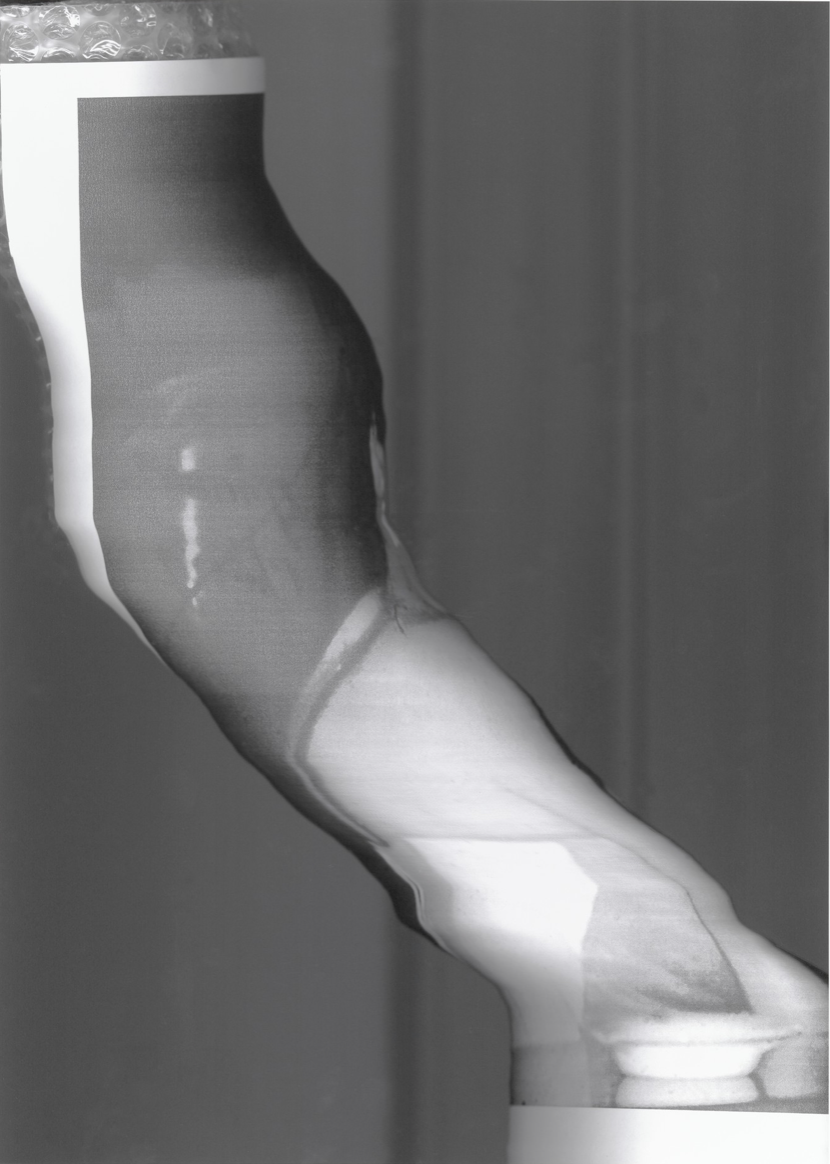

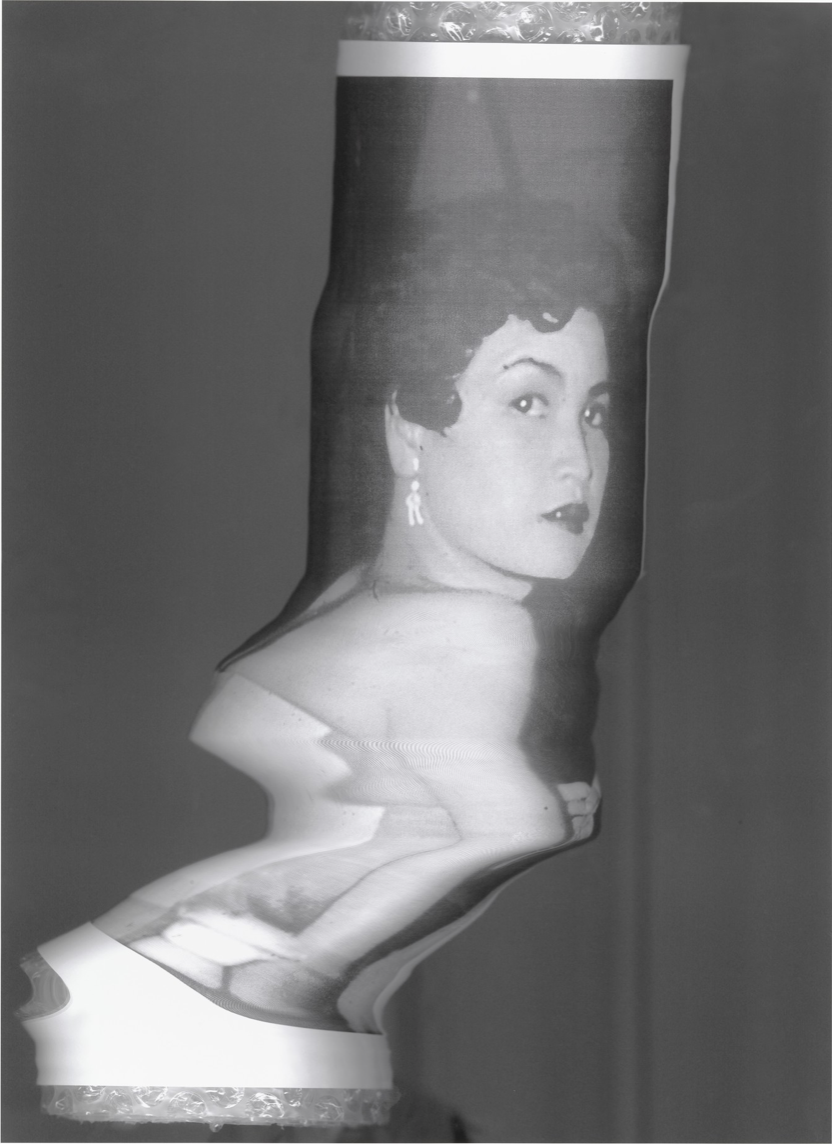
Untitled, 2008
Video, 6 minutes, looped
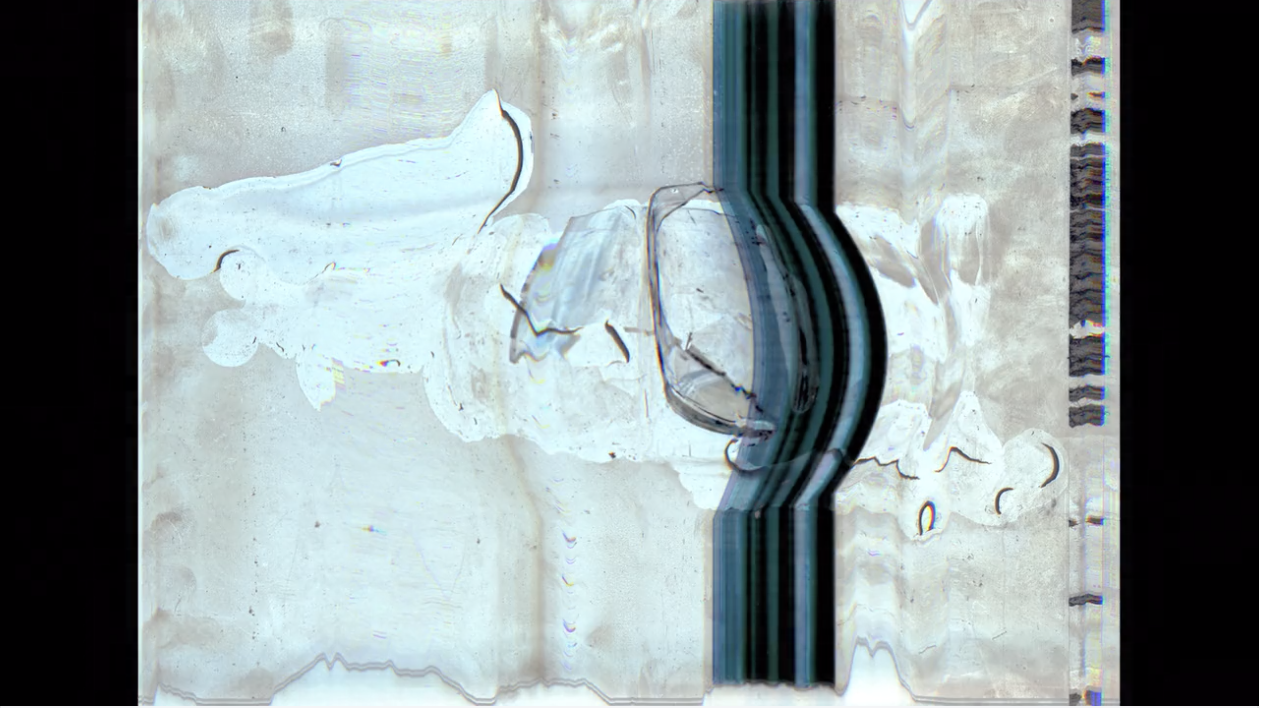
Hello, 2012

Untitled, 2015
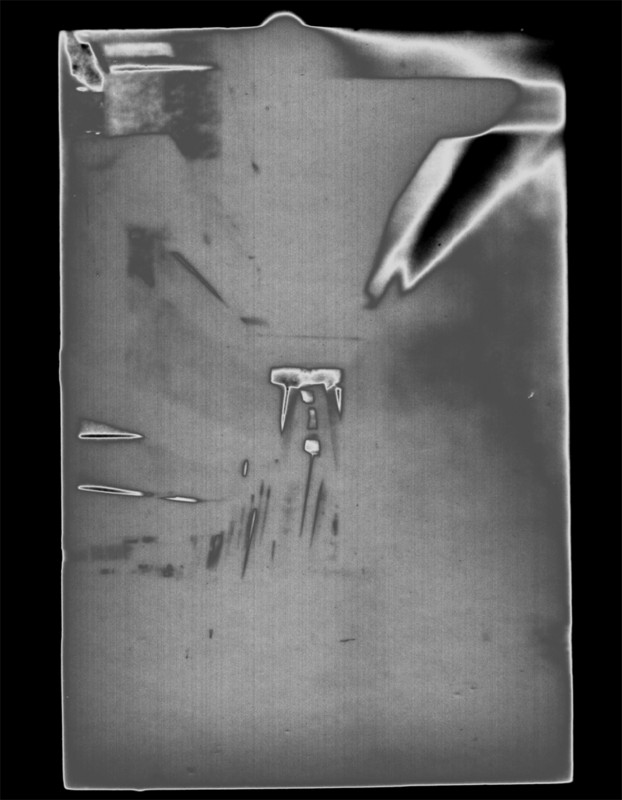
Untitled, 2007
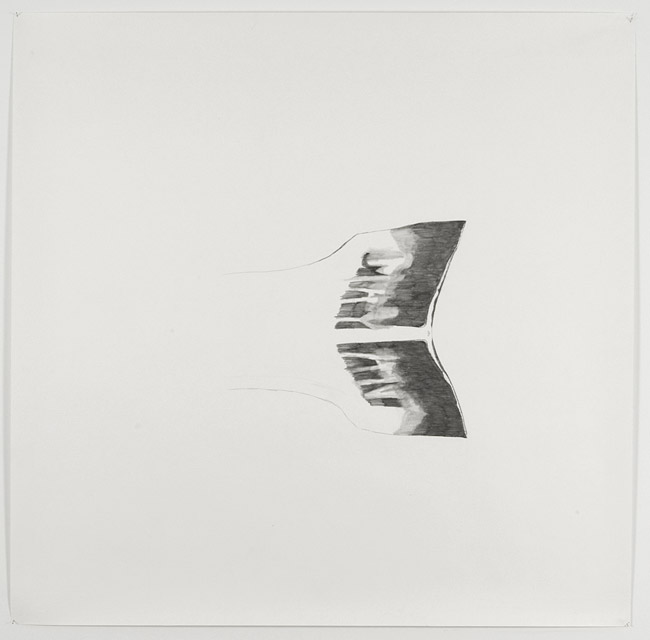
Untitled, 2014
projection, dimensions variable
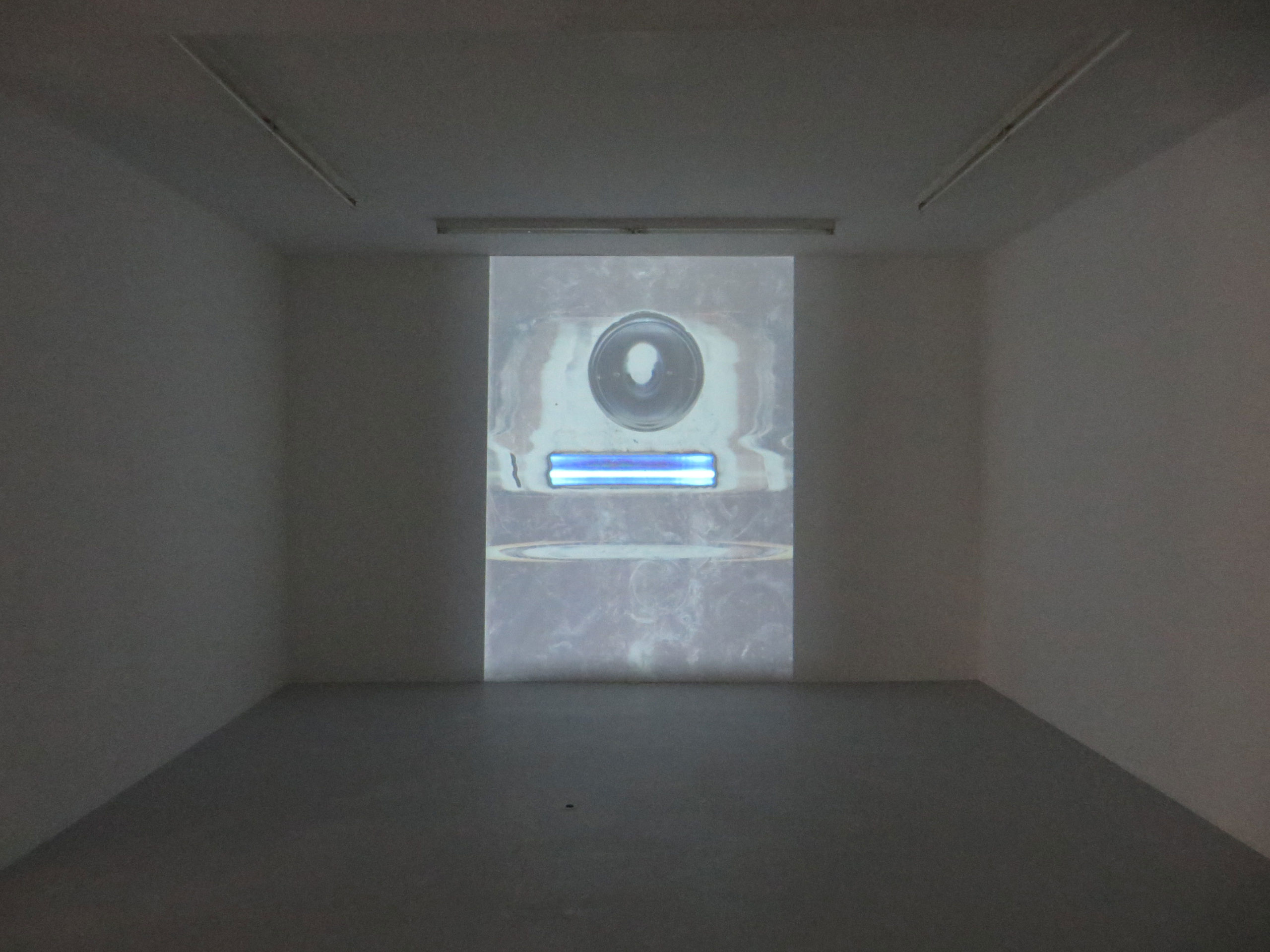

Untitled, 2019
‘Trisha Donnelly’s conspicuously untitled (and unexplained—there is no press release) work of installation art at the Shed is a lyrical op-ed about humanity’s inhumanity to nature. Into a capacious, dark gallery illuminated only by a little daylight coming in through vertical openings in one wall, Ms. Donnelly has brought the trunks of two large redwood trees and placed them atop the kind of padded, rolling platforms that furniture movers use. She’s also bandaged, as it were, the ends of their amputated limbs with cloth and twine. Across the room, the artist has placed a large number of similarly wounded, albeit smaller, sections of trees. (All the examples were already diseased and dying, and taken from private land.) Off to the side, separate from the mournful arboretum sits a black speaker that emits—at considerable volume—Leontyne Price singing “Habanera” from “Carmen.”
‘The effect is something like a World War I field hospital, minus the moaning and screaming. Each morning, in fact, someone from the Shed comes in and pours water on the two big trunks to keep them from drying out. On the floor, the spilled liquid looks not unlike blood in a black-and-white war movie.’
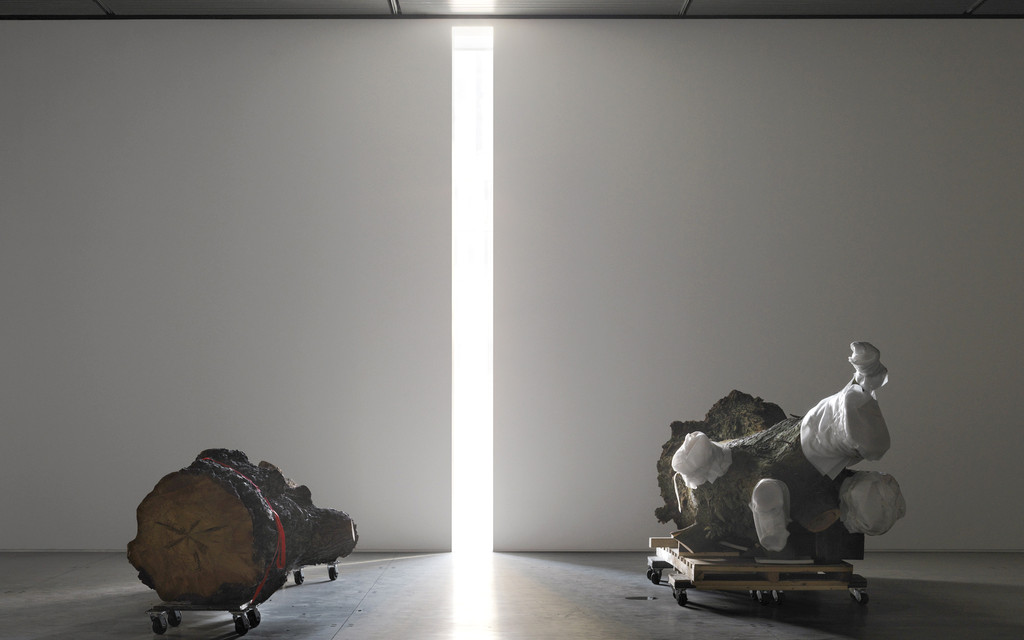
Untitled, 2002
‘In 2002, Trisha Donnelly created one of her best-known “events”. Arriving on horseback at the Casey Kaplan Gallery, dressed as a Napoleonic soldier, the artist announced that the Emperor had abdicated.’

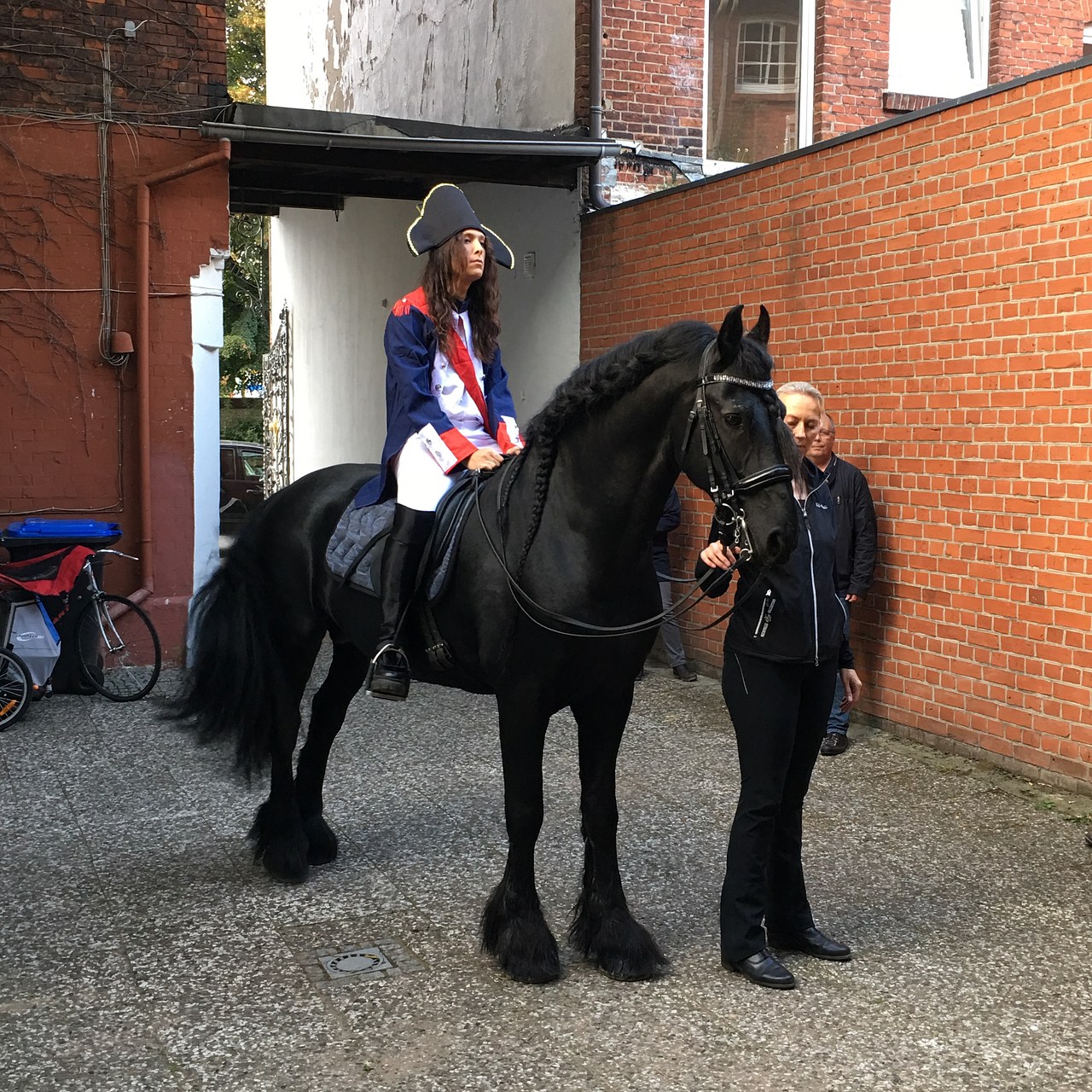
8 videos, 2012
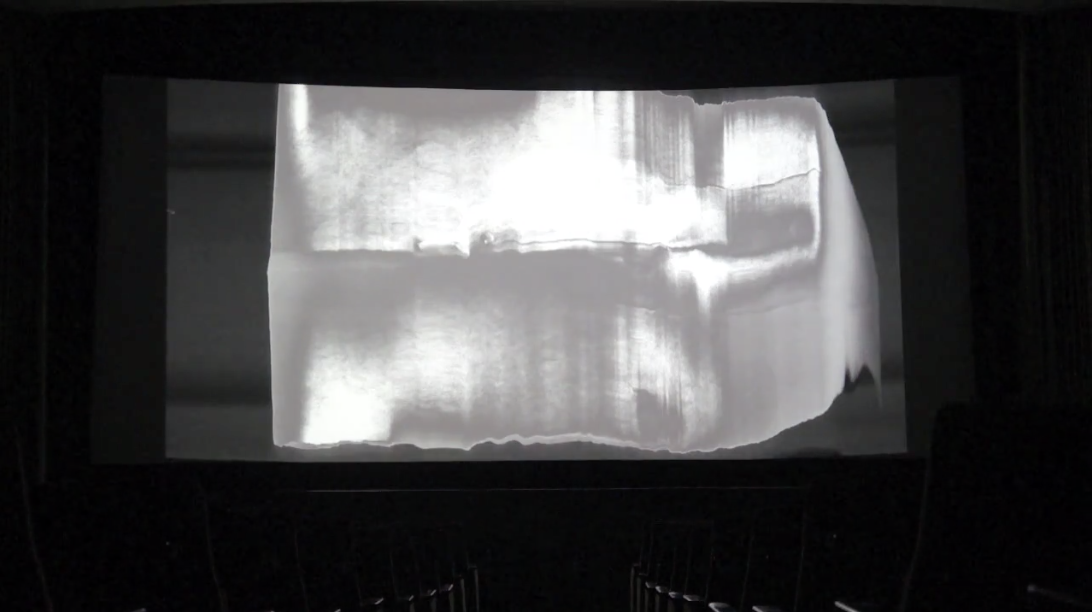
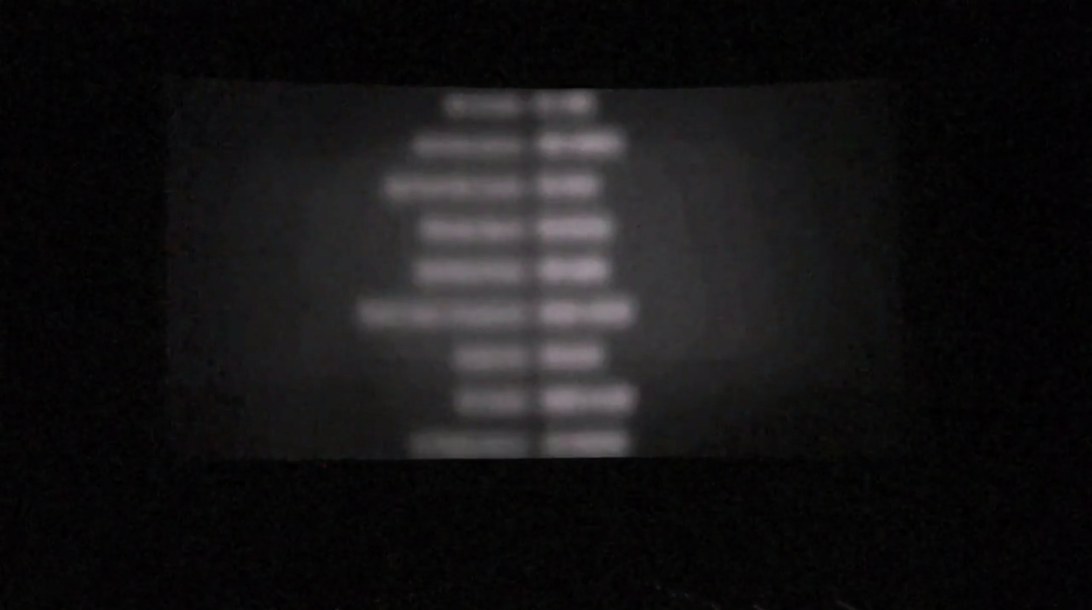

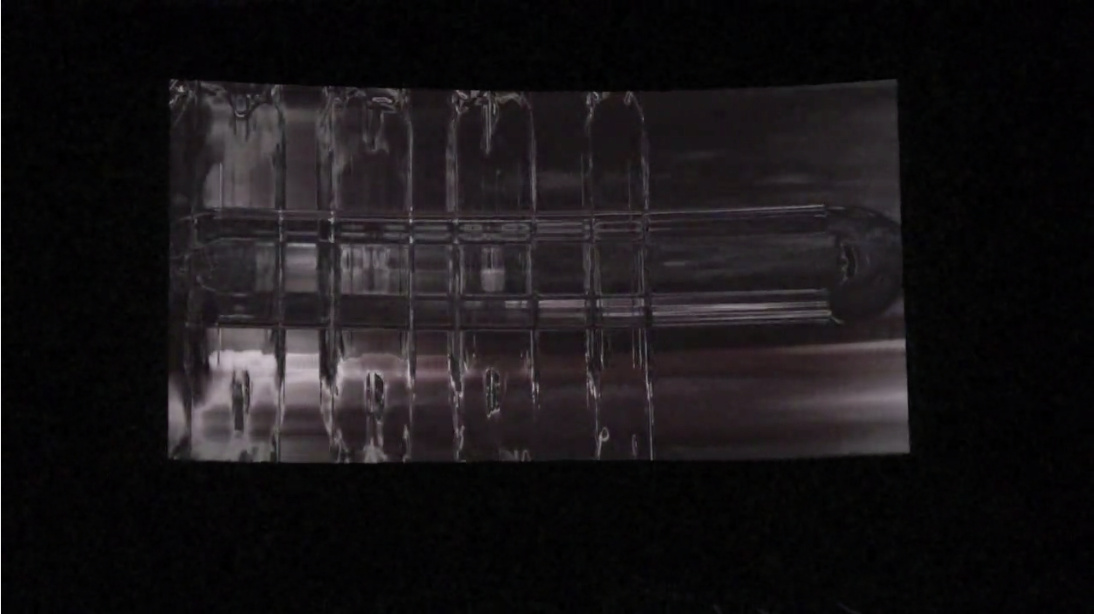
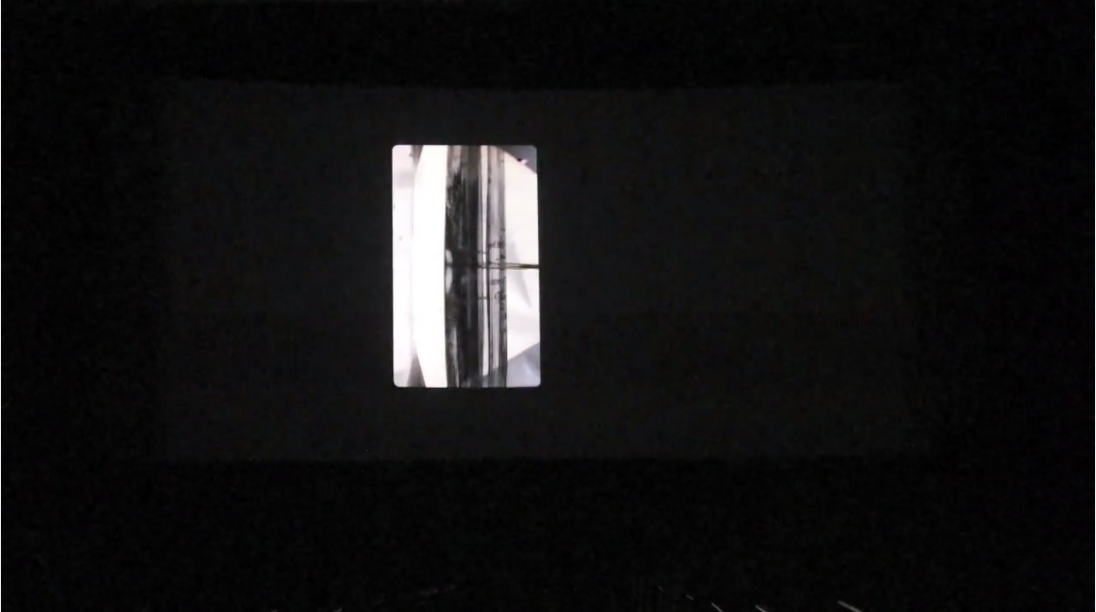
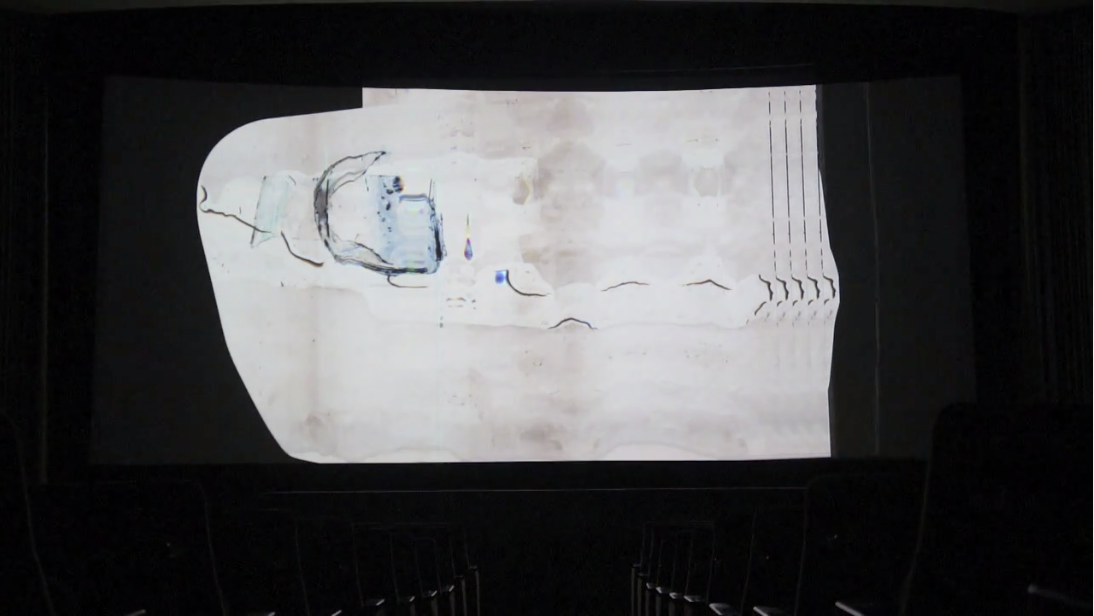
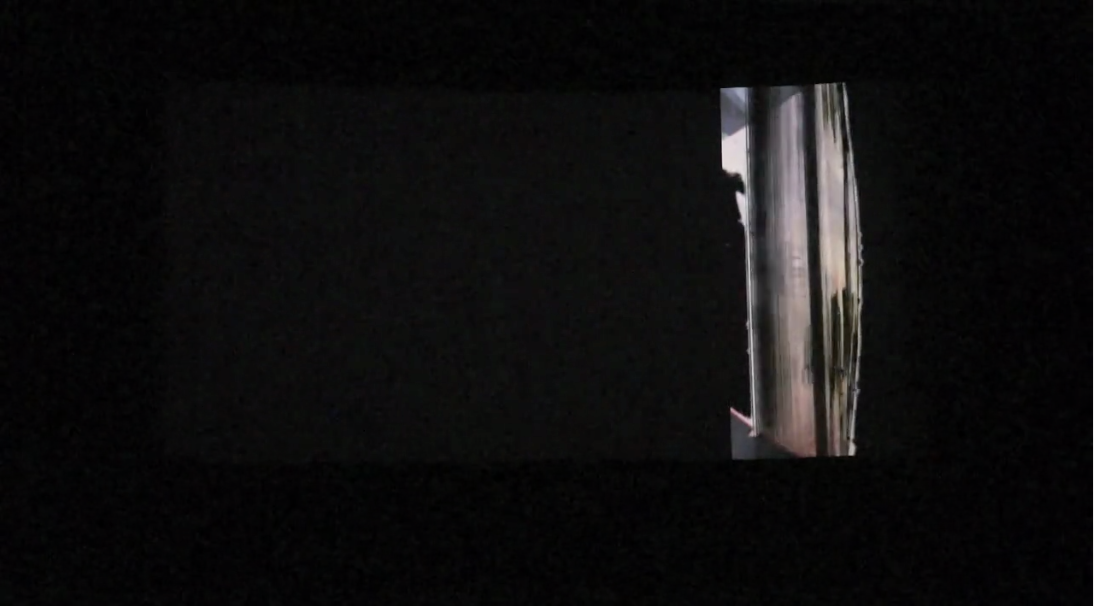
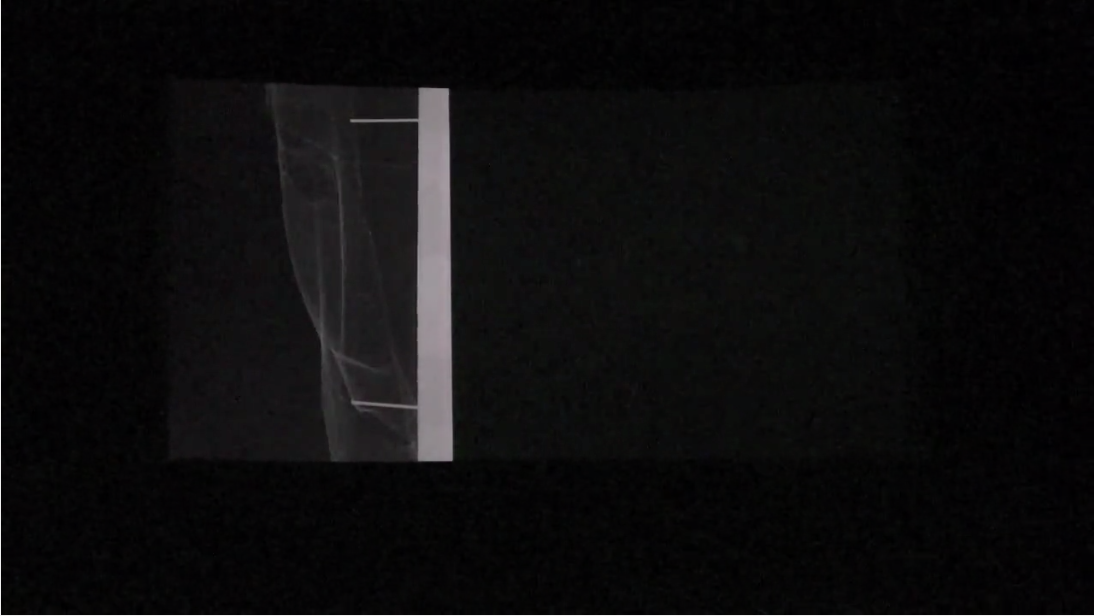
Untitled (Jumping), 1998-1999
‘In the silent video untitled (jumping) (1999), Donnelly reenacts what she contends are the signature gestures of specific rock musicians at the moment they achieve their “performance wall”—the point when they reach physical transcendence through their music. By jumping on an unseen trampoline, she floats in and out of the frame in slow motion, assuming a dreamlike state and re-creating the musicians’ adrenaline-induced moments of ecstasy. The identities of the different performers—from Ozzy Osbourne to Joey Ramone—are never revealed.’
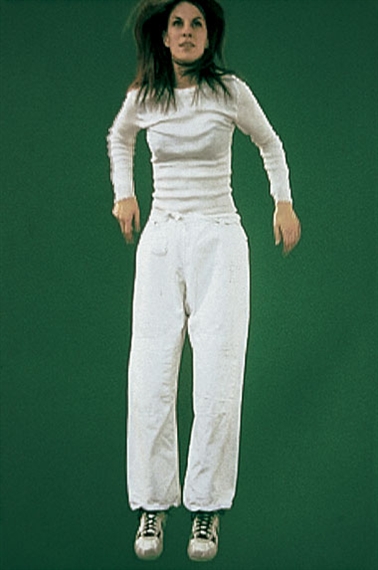
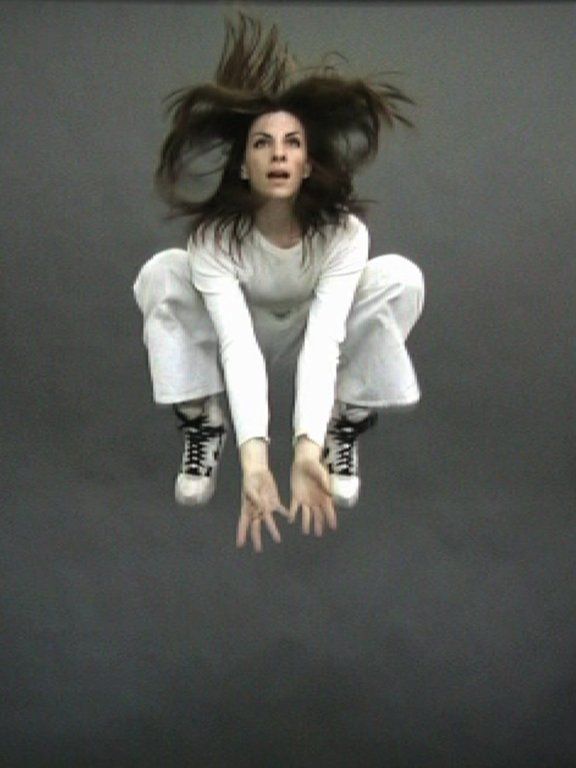
Various, 2017
‘Donnelly’s video works are often based on digital photographs, analog re-workings of their printouts and further layers of processing of the resulting materials. This inextricable fusion of source codes through the electronic sphere of digital processing is palpably present in another projection: a green texture flanked by two vertical red lines. A white beam crosses the image from top to bottom, a kind of light-scanner extracting all color and absorbing it into brightness once it comes into contact with a particular section. In light of Donnelly’s tactics, the realm of video art appears infinitely expansive. She makes explicit the function of photographs as the basis of film’s moving images only to twist this very foundation. It seems as if the presence of single takes is not hidden by adjusting their speed so that they appear as sequential movements. Instead, Donnelly alters their function, by not making many images move over progressing moments in time, but creating the impression of continuously stretching, folding and morphing a single image across the screen into infinite shapes. This process creates a sensation of walking deeper into layers of time, rather than following its chronological passing. The effect of video appearing not through moving images but as moving image is aided by the way Donnelly cuts through the habits of projection and positions her works vertically. Movement enters the scene as the transformation of perceptional habits vis-à-vis the alternate arrangements and material energies manifesting themselves in these theatrical spaces.
‘The third seemingly inconspicuous, small projection emanating from the base of the video projector is where the show becomes uncannily sublime. Here, a set of rings (perhaps from a binder) meet a bright white field. Staring at the projection for too long hurts the eyes – yet every time I moved my head to look away, bright colors appeared in the corner of my eye. Staring into the light as long as possible to determine whether I simply missed a frame in the projection was pointless. And there I found myself in the midst of Spiritism, trying to use technology to capture the invisible. When photographing the screen, the pattern revealed itself again: crisscrossing pillars much like on test cards used in television and screen calibration to probe the spectrum of visible colors. “Spectrum” designates electromagnetic emissions including light or a complete subset of colors. Its etymological kin “spectre” however is an even better frame for describing what emanates from Donnelly’s work: an optical illusion or – a ghostly presence. This is one that activates the senses including the infamous sixth one.’
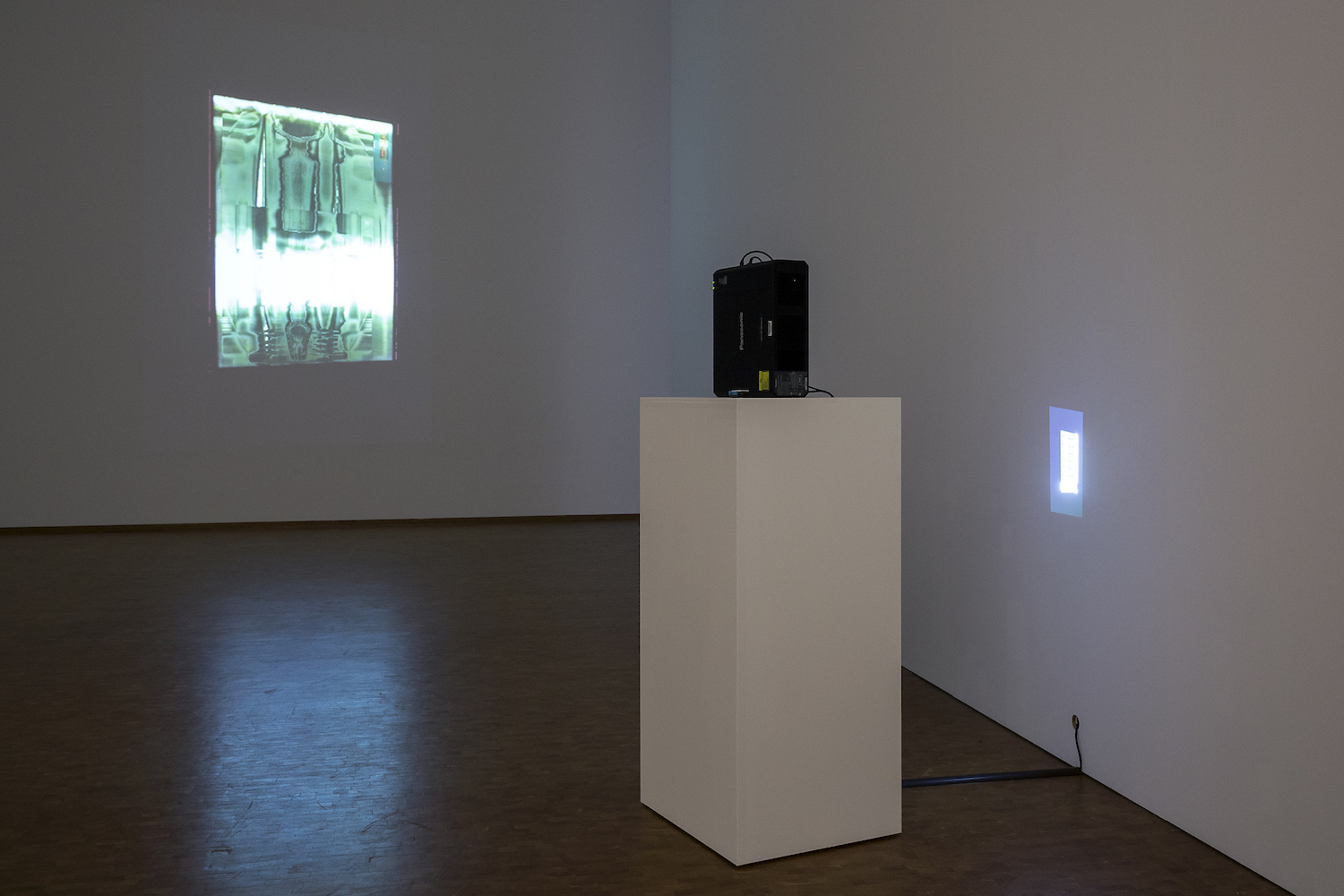
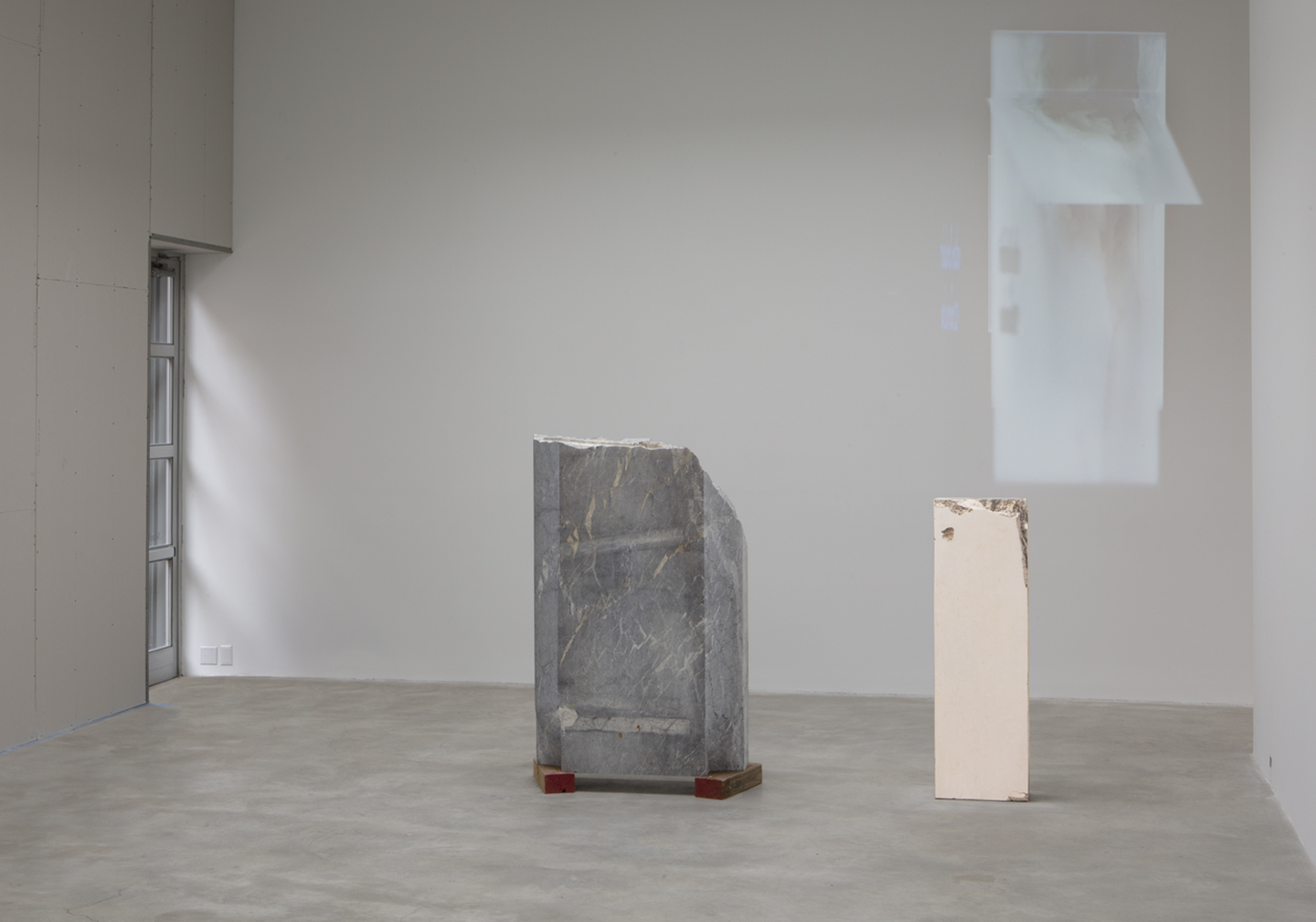
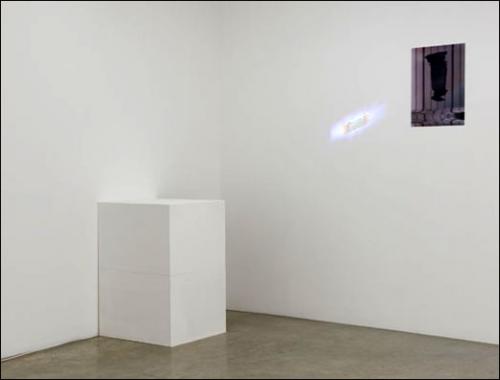
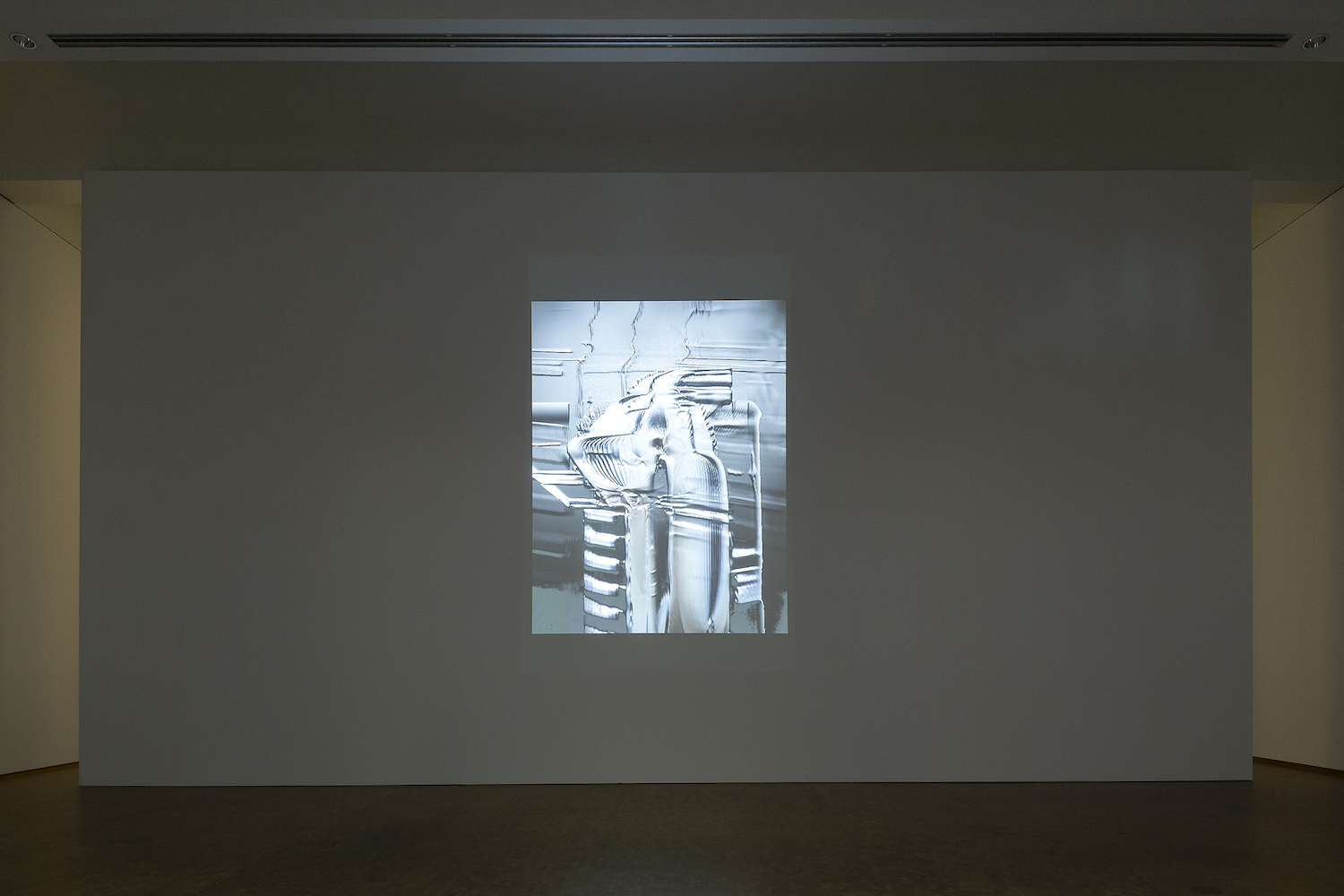
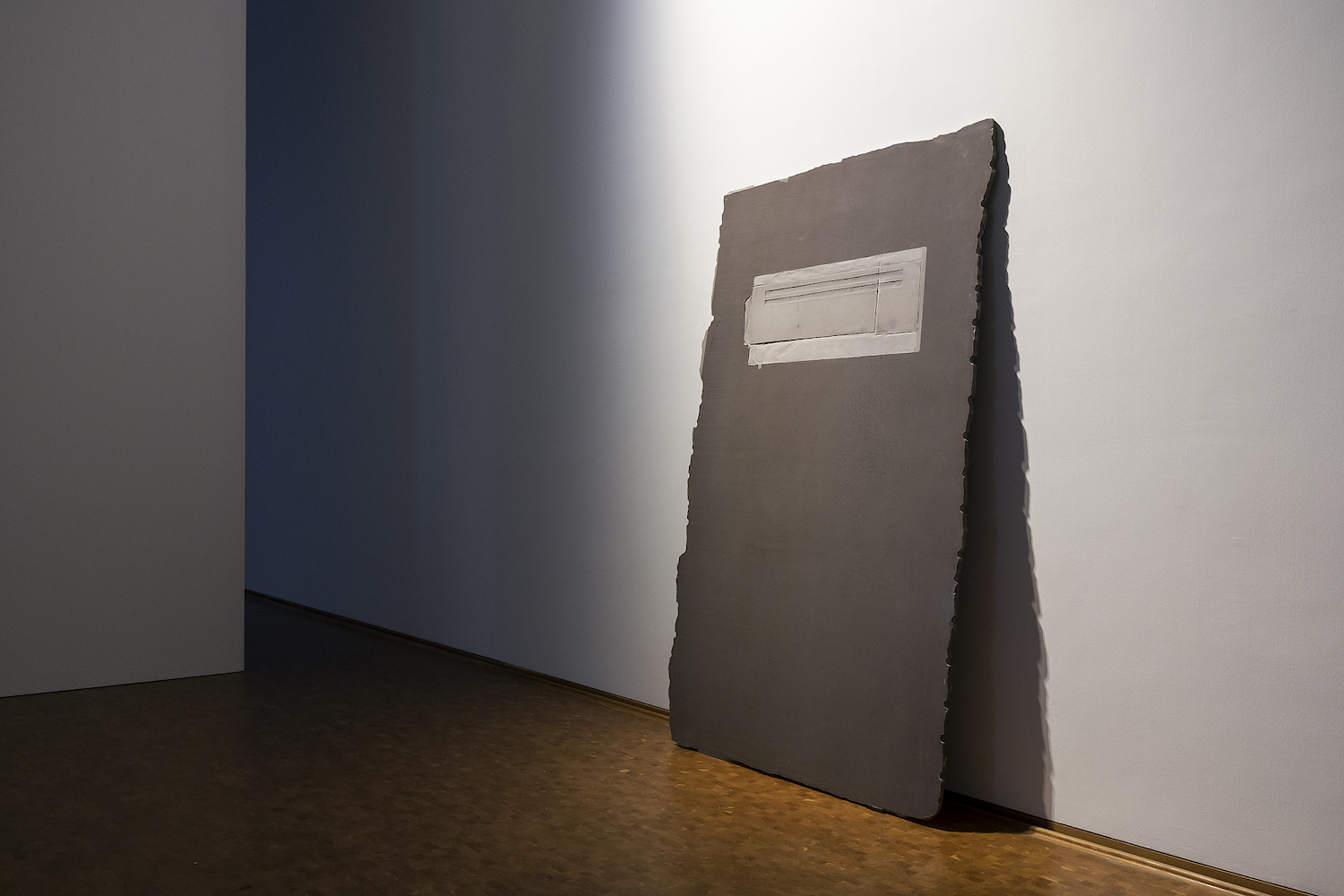
The Dashiell Delay, 2006
‘Akin to her site-specific practice, Donnelly here involves the collector in the process of art production and reception. She conceives an edition subscription, where a total of 10 installments are made and delivered regularly over the period of one year. Consisting of four Xeroxes, three gelatin silver prints, one line-block, one felt-tip pen drawing, and marble slab, this edition makes for twelve months of mystery: ten unpredictable messages that will (or will not) be decoded in the record left behind.’
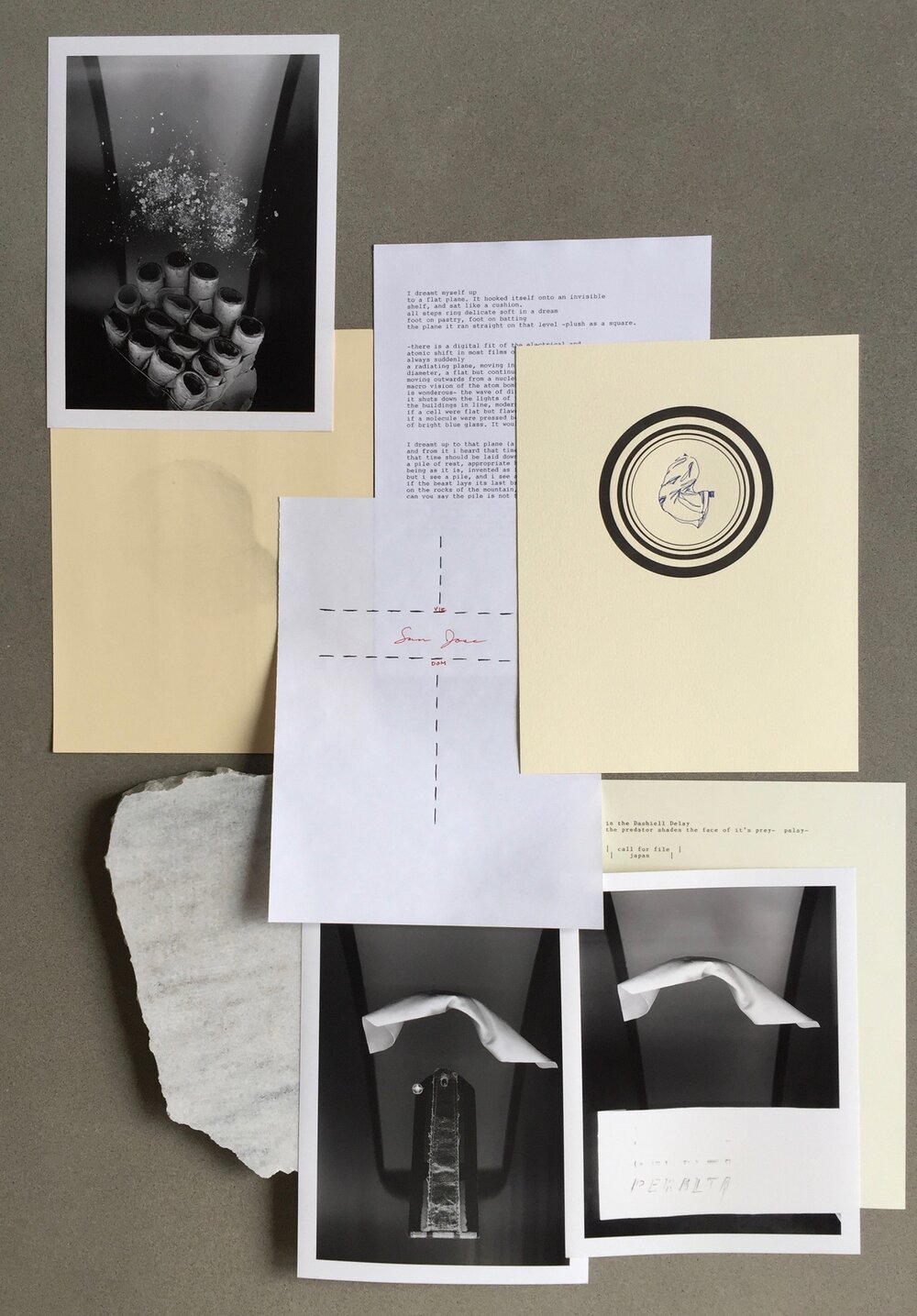
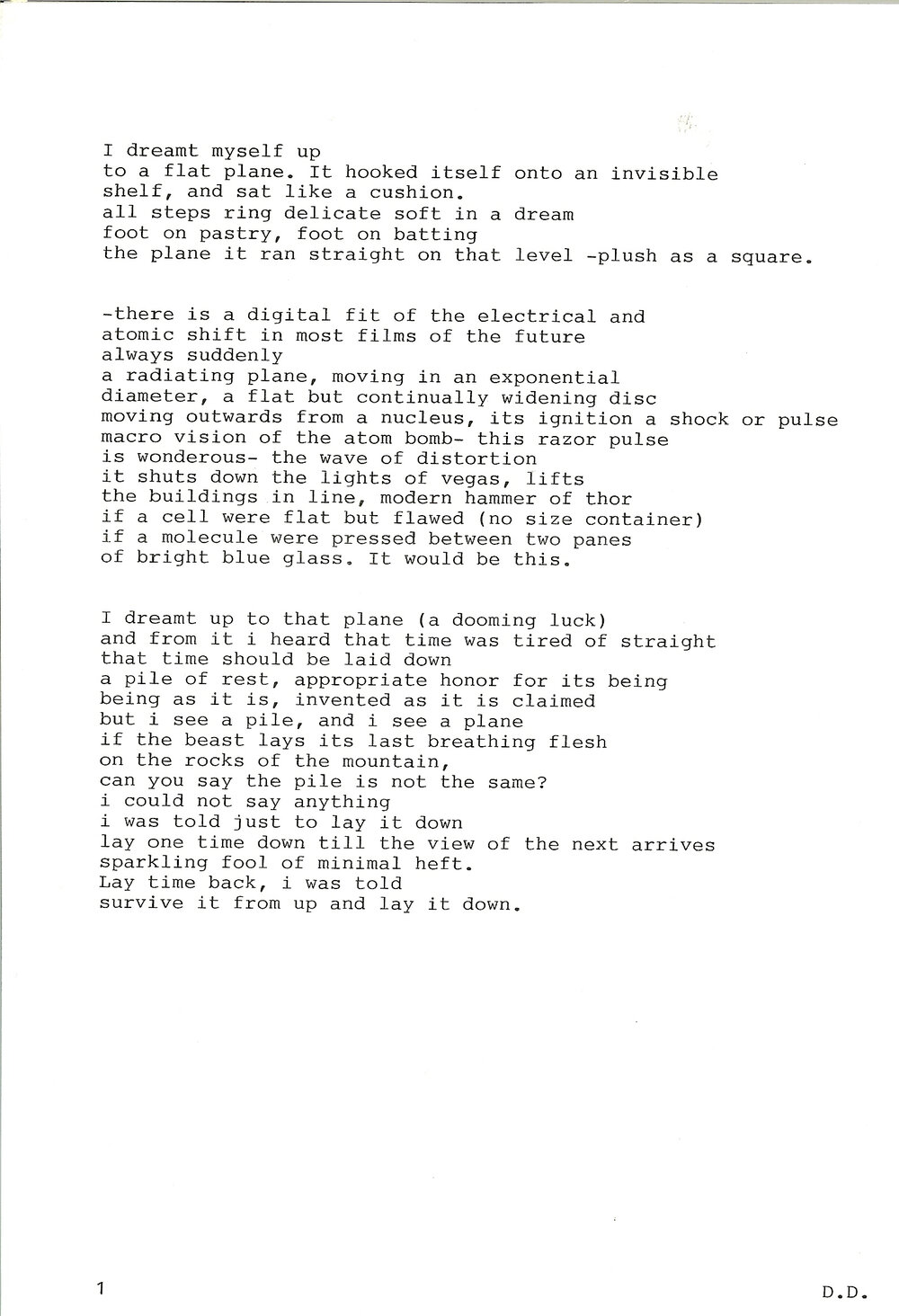
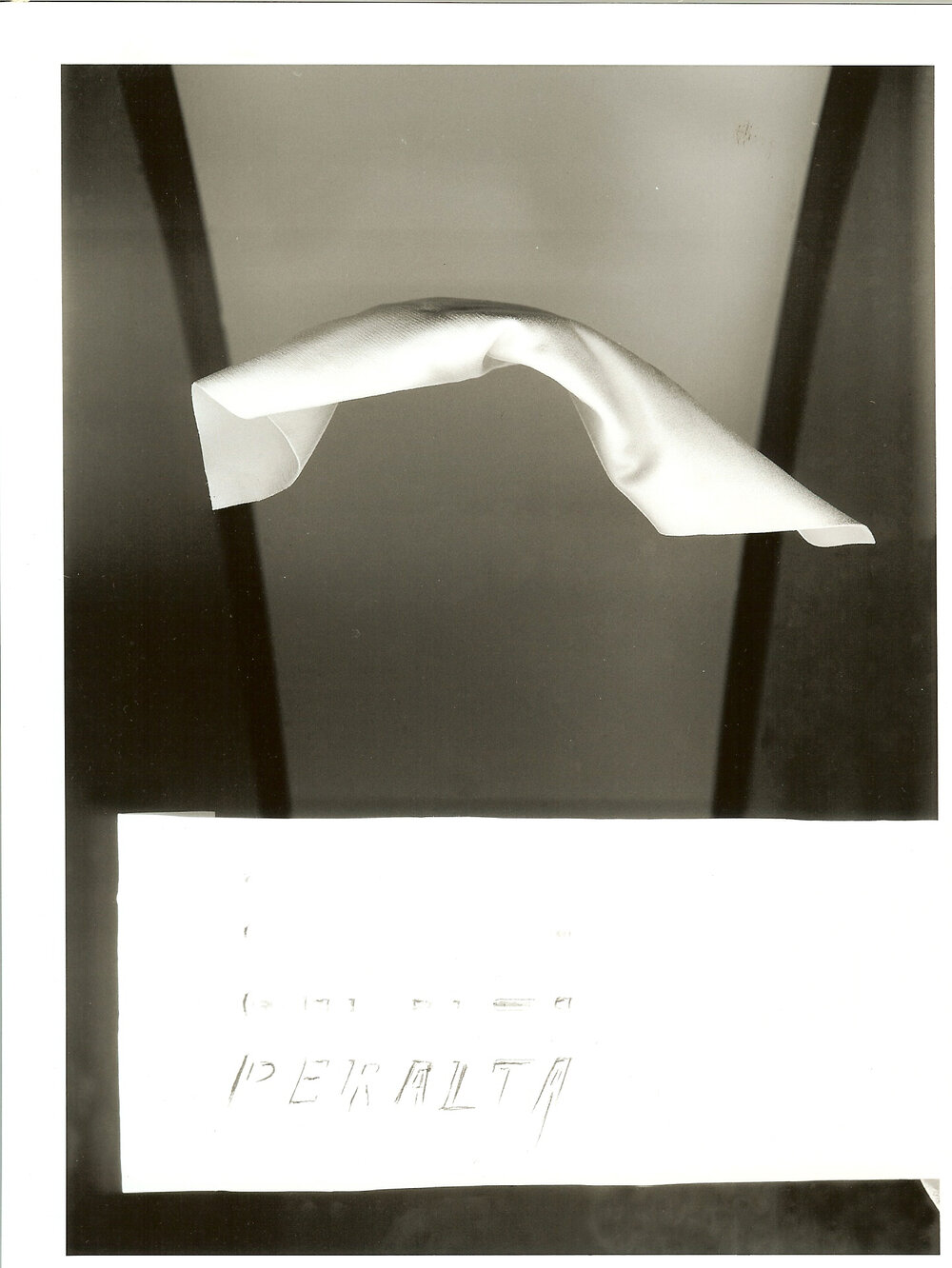
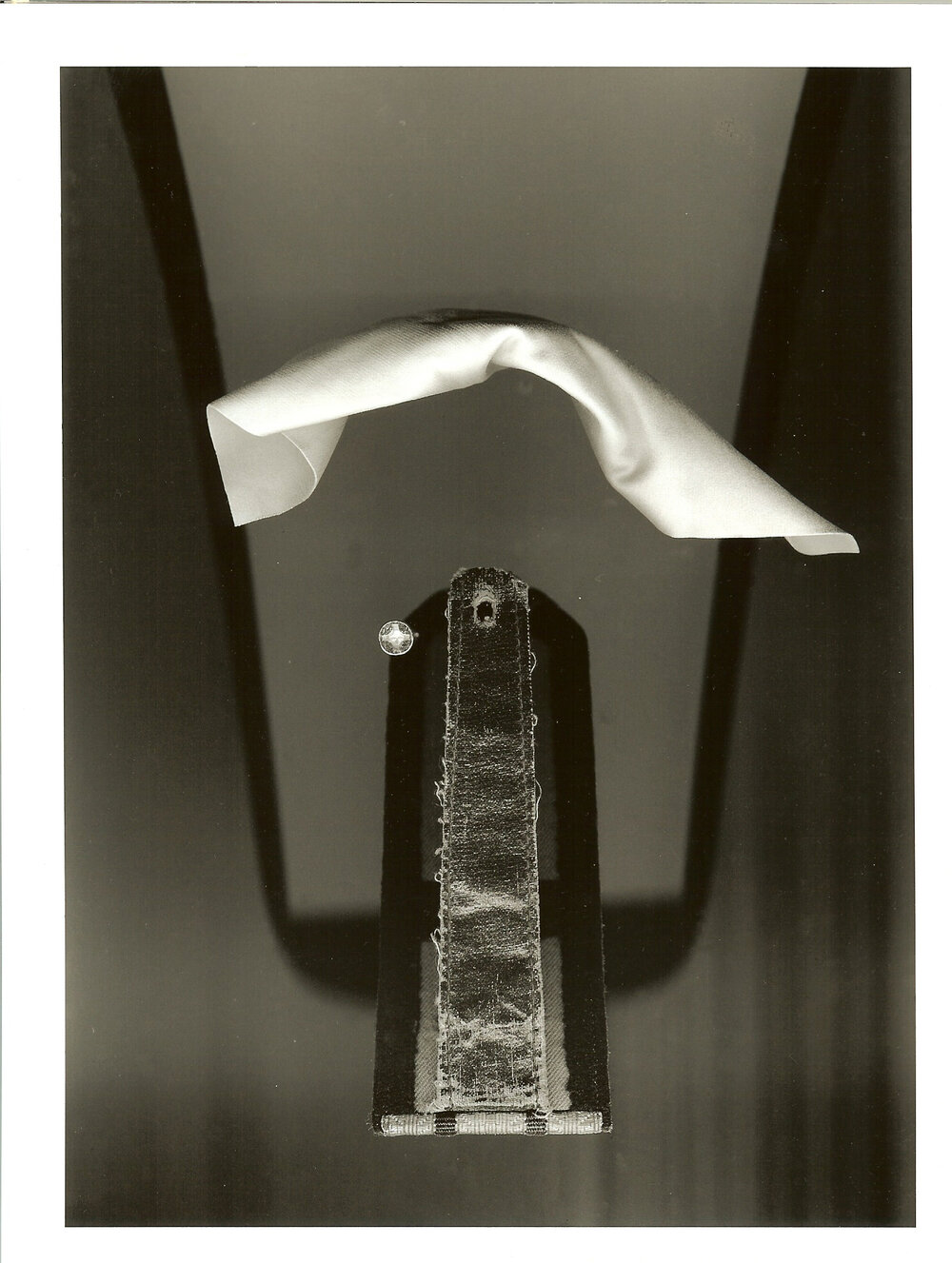
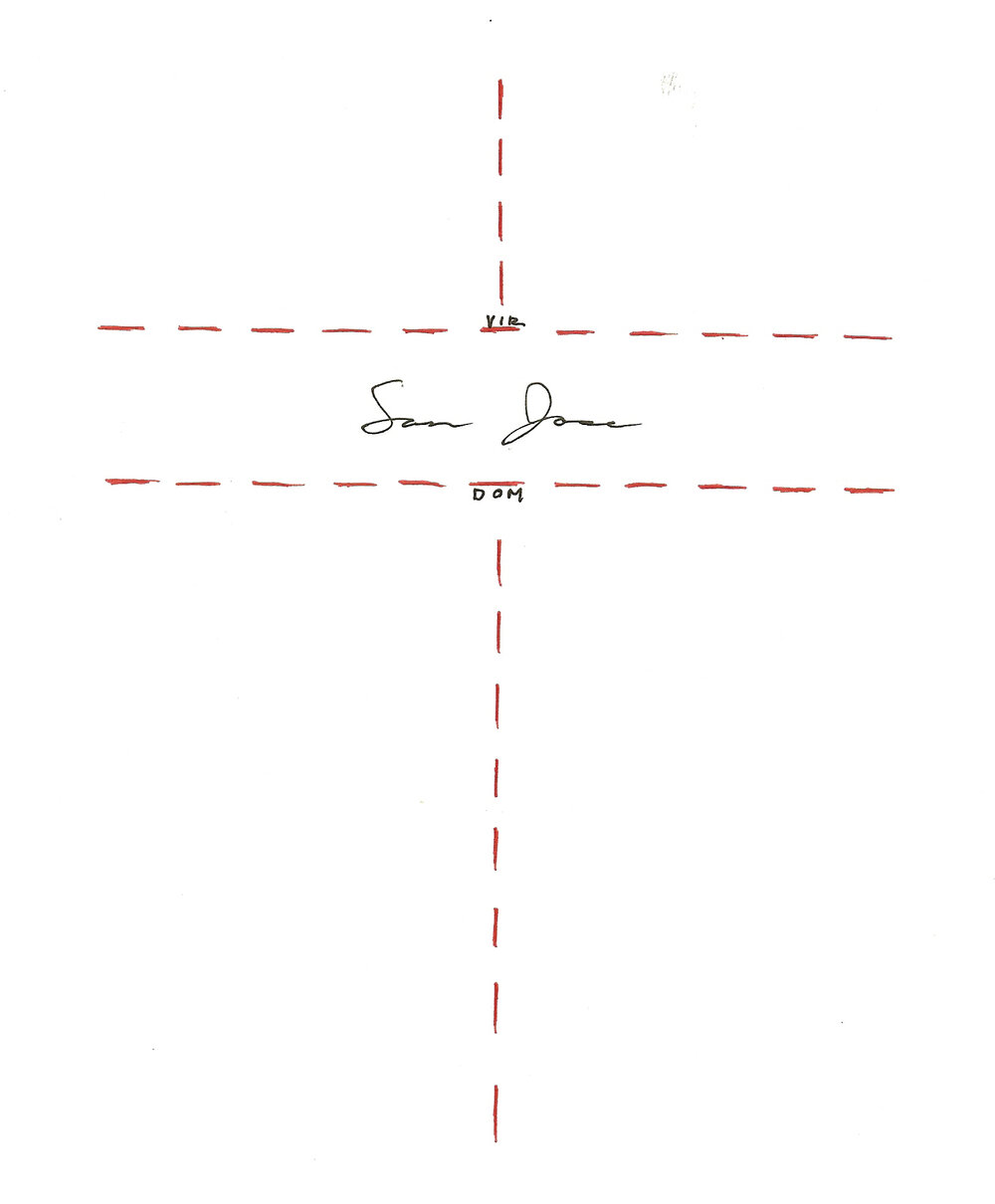
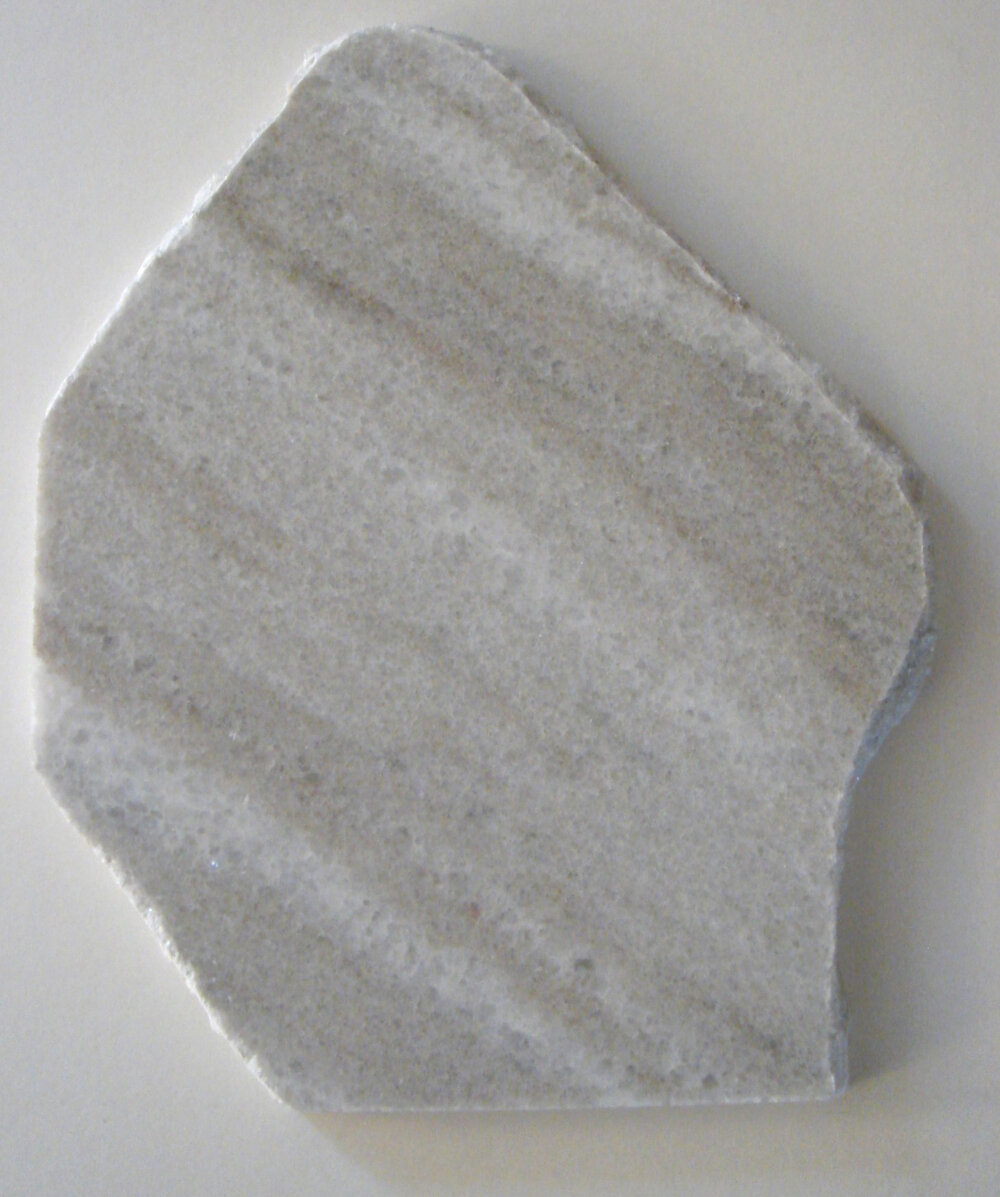
Let ’em, 2005
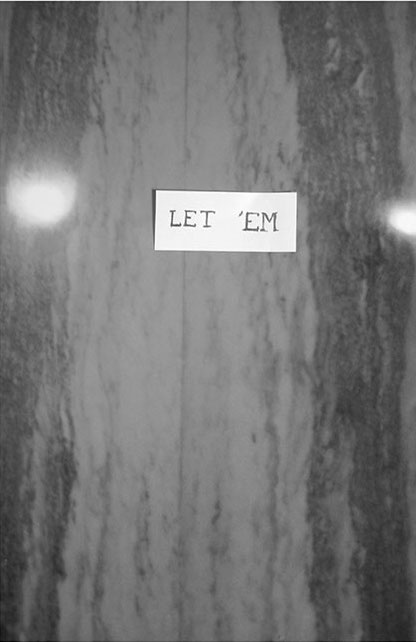
Untitled, 2010
Travertine, 61.3 x 32 x 7.3″ x 155.6 x 81.3 x 18.5 cm
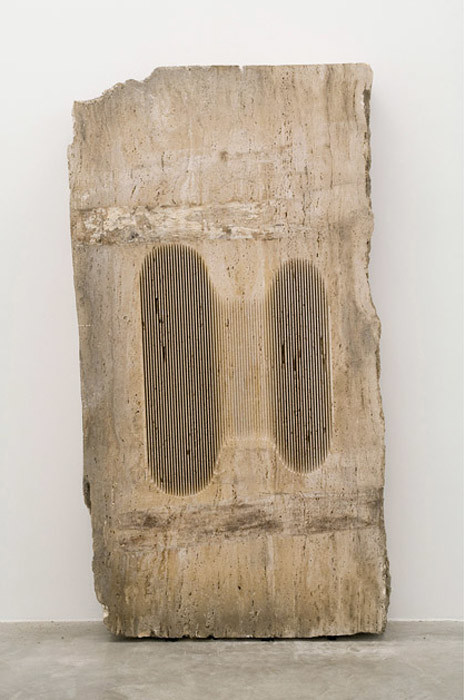
Untitled, 2012
‘Commandeering a high floor, Donnelly presented a suspended sculpture, a big, steel-framed, partly cracked tray held up with aeroplane cables, like a perpetual enigmatic experiment. I remember low lighting, I remember the variable tilting of the oblique tray and water in it, but mostly I remember that characteristic quality of insistent wordless proposition: disbelief suspended, the author as artist erased and replaced, prospectively, with someone or something arcane and anxiety-making, and then the figure of Donnelly, manipulating the murky theatrics, returning to mind.’
Untitled, 2018
pencil and print on color paper

Untitled, 2010
video projection and rc-print, 3.19 minutes looped
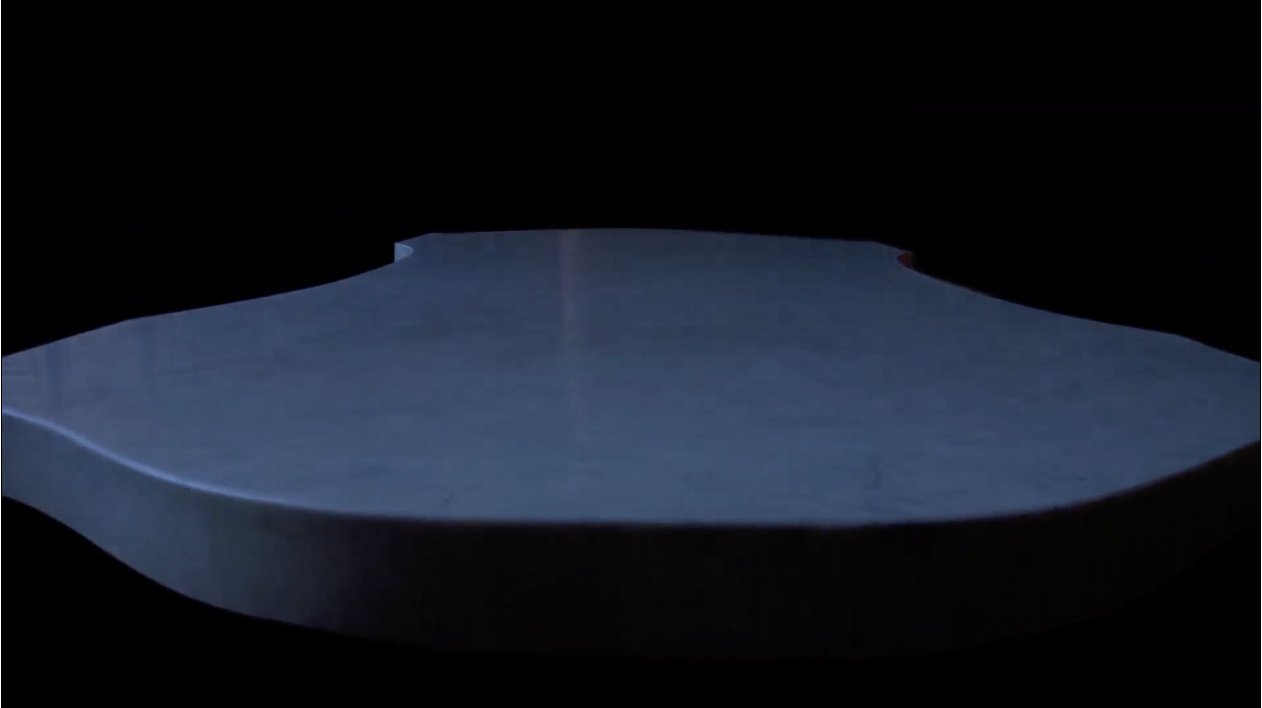
*
p.s. Hey. ** Lucas, Voila! Nice summer, especially since Paris is included. Hopefully we won’t be heat-blasted then. You sound really great, that’s so happy making. I’ll try to do a spotlight on ‘It Then’ if I can find enough of an excerpt online, as I don’t have a physical copy. The new script is still very much in process, but the ventriloquist stuff is gone. The boy with the puppet is still prominent. It’s getting better. I’m pretty excited. It’ll probably be a feature film, but maybe a shortish one. We’ll see. My day was working on the script basically, partly by default because I forgot to pay the electricity bill so the power and internet were cut off until late last night. Scary how empty life gets when that happens. Anyway, I hope the queer part of the soccer match upped the sport’s game. ** Carsten, Yeah, when Reed’s great, he’s great. I love the Stooges, of course. I like his first few solo albums. After that, for me, his stuff got very spotty, and I haven’t been excited by anything he’s done in, gosh, decades. But I think he sticks to the old stuff in concert, so it should be fun. But you tell me. ** Misanthrope, David will have to slip and fall into the cure, I just hope he remembers why he likes being alive in time. I hear ‘Thunderbolts’ is kind of more ragtag than the usual Marvel stuff, which sort of appeals. Thursday, cool, imminently. Have fun. Well, obviously you will. ** Alistair, Hi, Alistair! Thanks a lot for coming in. Interesting about the feedback you’re getting to your poems. I’m sure you can imagine that my poetry was pretty divisive when I was in the heat of writing poems, and the problems people had sound not dissimilar to yours. I’ve never really understood people who want poetry or fiction to soothe them and make them feel better in a conventional way. They don’t demand that from movies or music, usually. Needless to say, I relate and encourage your desire to write about yourself or your thoughts clearly. That’s what will or already does make the poems original and distinct, you know, and those are the qualities, plus skill of some sort, that make writing mean something, I think. All of that probably sounds obvious. Btw, no etiquette here at all, or, if there is, you aced it. Tell me more about your poetry or anything if you like. It’s very good to meet you. ** _Black_Acrylic, How sweet, that parade. I think I mentioned that I went to this giant celebration when France won (I think) the World Cup, along with 500,000 people, cheering Mbappe and Messi and the whole gang, and it was kind of joyous. Surely at least still somewhat so on a TV screen. That is so curious and interesting about Kraftwerk being influenced by early Gilbert & George. That’s so funny. I never knew that. Wow. ** Jack Skelley, You de-quirked this place! ‘Mumbo Jumbo’ is really, worth a full read. Maybe you remember when I had him read at Beyond Baroque? He wasn’t very friendly, but hey. ‘Green Acres’ is Samuel Beckett, or it might as well be. Glad our Sunday confab inspired hours on your memoir. It’ll get faster. You know it. ** Bill, Hey Bill! Welcome back! I’ll be able to tell you the date of the proximate ‘RT’ screening very soon. And on Saturday I met and had a really good visit with a writer I know you like, Brian Evenson. He’s here ‘cos they’re doing a conference on his work at the Sorbonne. The French love Evenson, no surprise at all. He’s a really cool and great guy. Thanks for the look-see on your trip’s highlights. I’ll pore over the evidence. Thank you! What’s next for you? ** scunnard, Hi, pal. I’m good, headlong into writing the new film script mostly, which is a pleasure. Yes, we had serious hail here that damaged buildings and everything. It was gorgeous. Now it’s chilly and sunny, which is almost as gorgeous if a lot less daunting. ** Dominik, Hi!!! Yay, a new Sparks acolyte! Yeah, I saw the word ‘curdled’ somewhere and thought it really deserved a good home, it’s just whether that means a mansion or a tent, I guess. Haven’t found it yet. I trust love indulged himself yesterday. I had the same thing with a massive catalog of the Rammelzee show I saw the other day, but I literally have nowhere to put it, so I gave up. Love feeling in awe of electricity, G. ** Steeqhen, Friends, yes, cue a million corny songs celebrating friendship. Even the fewer number of songs celebrating friends with substance abuse problems. Friendship has its demands. Sorry, though. ** Sarah, Hi. Melodramatic sounds kind of exciting, so please do. Cool about your stand-in reader friend. Who will go with friends who will hold up their iPhones at the time, I hope. Yes, I’ve been to Efteling twice. It’s the best. And they have this crazy looking new kind of goth-y ride called Danse Macabre where the building supposedly starts dancing with you inside it. I’ll report back. You have a solidly great day yourself. xo. ** Steve, Hi. ‘The Last Days of Louisiana Red’ is quite good. As is ‘Yellow Back Radio Broke-Down’ which came in-between ‘Mumbo’ and ‘Freelance’. I mostly think Utopia is prog in overly self-conscious quotation marks and severely dated. Except when he/they did some shorter pop-like songs in their later days, which can be quite good. Hoping your today is stress-free to the max. So tough, so sorry, my friend. ** HaRpEr, Hey. ‘The Free-Lance Pallbearers’ is Reed’s other unimpeachably fantastic novel, so, yes, recommended. I’m good with making a short film next. Zac is less enthusiastic about the idea. I think we’ll end up making a feature film that’s shorter than ‘RT’ or at least much easier to get made. That’s the main goal, even if it ends up being 90-ish minutes like our other ones. There’s no way we’re going to go through the years of fundraising hell that we did with ‘RT’. So it’s more about trying really hard to make it less expensive, less characters, no settings that require significant money being raised. I tried ‘Um, Jennifer’ yesterday too, and I like it pretty well so far. They seem very cool in interviews, so I’m inclined to dig in and concentrate. Marie Davidson: I don’t know them/her or that record, I’ll search it out Thanks! ** Malik, Yay, one of my favorite all-time novels too. I would read ‘The Freelance Pallbearers’ next. That’s my second favorite Reed novel and an big all-time favorite too. Happy … what is it … Tuesday! ** Right. Today I’ve filled my galerie with works by one of my very, very favorite contemporary artists, the enigmatic and complex and endlessly surprising Trisha Donnelly. Have a look around and see what you think, please. See you tomorrow.




 Now available in North America
Now available in North America 
Hi!!
I guess “curdled” will just slip into its best-suited habitat naturally, now that it’s in the back of your mind. Or at least that’s how it usually works when a word grips me.
Love did indulge himself, but I understand the issue with huge albums and catalogs – they’re expensive and a pain to store. But some of them are just must-haves… The Rammellzee show you saw was good, then, I take it? Looking at his work always feels almost like a physical punch to my brain – all those colors and details!
I completely agree with love. Going without electricity, even for a short time, feels absolutely disorienting and crazy – and the fact that it does feels even crazier! Love simply – and rather boringly – asking the rain to stop, Od.
Trisha Donnelly is a new name to me and yes, enigmatic is a word I would use to describe what she does. Will take another few looks to get a handle on what it is going on in her work here. Which can only be a good thing, by my reckoning. I love that she was trying to capture a new dimension in Satin Operator, that seems such an admirable goal.
The Leeds United victory parade through the streets yesterday drew in 100,000 people. Spontaneous events like that are indeed joyous and they don’t seem to come around very often.
Dennis, Well, the goofball has gone and got himself a food card. When he applied, he said he was homeless and used our address. Now he gets $290 a month in food assistance. He was denied cash assistance. There’s a part that’s kind of funny about it, but there’s the other part that’s just sad, especially as he’s an almost 300-lb. guy who doesn’t need it and just taking advantage of a very lenient system. Oh, well.
Looks like it’s gonna rain most of the time we’re there. We’ll still have fun, though.
Hey Dennis,
Yeah, friends; can’t live without them, even when they sometimes don’t realize how much you care. I think I’m able to handle and deal with it with both the sternness and empathy that is needed, as I also used to be that person that didn’t realize how much my friends did care about me.
Waiting for the bus back to my parents house, gotta drop stuff off + pick up stuff, and just have a little visit. I picked a pretty terrible time to get it though, all the schools are finished so it’s gonna be filled with all the teens from the private schools in the city, though that’s probably better than having it be filled of the ones who go to my old school, which would flood the bus with a stench of weed, vapes, and tiktok sounds on full volume.
Once I pay my rent tomorrow, and do the big shop for the week or so, I gotta start deciding on which smart dumbphone i want, as I want to rid myself of this eternal distraction. I’ve been waking up late and doing nothing, and normally I’d be kicking myself for having such a bad routine, but I’m giving myself grace for this week cause I’ve spent the past 3 or so months killing myself!
My other main goal, bar trying to sort my life out for the coming months, is to write a poem for Sunday, for one of the poetry night thingies. I want to try and make it just words that are trying to evoke a feeling, rather than trying to capture a feeling in words, but i’ll need to give it a lot of my time to have something im happy with. I think the months of looking at Rimbaud and the likes has rubbed off on me.
Dear Harold Lloyd: Thanks for tdays post. Always love a “The Young Ones” reference. (“Meanwhile, the next day…” LOL). I barely remember Reed at BB. But hey. OKay I’m gonna think seriously about Green Acres and Beckett!!! Yours, Buster Keaton
Hi, and thank you. I appreciate knowing that someone can relate to my issues, at least, in a time where it seems like everyone wants to be as detached from everyone else as possible. I wrote a little more today. My favorite band put out a new album recently, and I think it’s given me some inspiration. You’re right that most people don’t seem to like writing that doesn’t soothe. I feel like I’ve gotten more jaded as I’ve gotten older and things around me have changed, but I also feel uncomfortable asking for feedback on my more politically motivated poems, so I don’t ask too much anymore. It feels like I’m just showing someone a list of complaints, no matter how valid they are. There’s a lot to complain about, anyway. I’ve found that writing is a good outlet so it doesn’t take over my conversations with other people as much. Thanks for taking the time to respond to my first comment.
Hello!
I’ve been keeping up with the blog for a while, but I’ve been too shy to leave a comment until now. I just wanted to let you know that I really appreciate you and your blog always exposing me to interesting art and information. I’d never heard of Trisha Donelly until today, but her work definitely seems up my alley. It feels like we live in a time where there’s so much information out there that a lot of the most interesting stuff gets buried in it, so it’s nice to have a place like this where I can always go to find things that inspire me. I discovered your work a year or two ago, when I was a senior in high school who read Burroughs and Acker, and it was a revelation to have found someone who wrote the exact kind of work that I wanted to read. Your books are still the closest anyone else has gotten to reflecting my own experience, and they’ve shown me a way to write about all this stuff myself. Also, congratulations on the release of Room Temperature! I can’t wait to watch it if it becomes available online/screens somewhere near me.
I mostly agree there on the subject of Iggy. The Stooges are extraordinary—probably my favorite rock band to this day. The solo stuff is spotty indeed, but studded with enough gems to keep me going. He has obviously embraced his crooner phase in the last few albums, but why not, his voice has aged beautifully. There’s some good stuff on those records, including the one he did in French.
to Alistair: I eavesdropped on your exchange with Dennis & as I’ve been working on an ethnopoetics day for this blog, it reminded me of this quote from Jerome Rothenberg’s commentary on an African abuse-poem: “A reminder too that good-feeling per se has rarely been the central aim of a poetry derived from the workings of shamans & sacred clowns engaged (more often & more like ourselves than we had previously imagined) in traditional rituals of abuse & disruption.”
Poetry is not about giving comfort. My poem “These Words Are a Knife” caused a Polish cousin of mine to reach out to see if I was OK… which still makes me chuckle, cause to me it’s a jubilant poem.
So don’t worry, you’ll find your crowd.
Hi, Dennis!! Wow, I really enjoyed getting lost for a bit in Trisha’s installations/sculptures—thanks! Her video projections are wonderfully lulling yet engaging: a winning combo for me. Here’s a song that I’ve been listening to today that I think would pair well with her work, appropriately titled ‘Spring’. How’s everything going with procuring future screenings of ‘RT’? xoxo
hey Interesting post!
I’ve been meaning to comment! I did see your response but never got to respond your very nice and your words i appreciate it even if it wasn’t necessary–but that doesn’t mean unnecessary if that makes sense. It means alot
I guess I’ve been picking myself up somewhat through the days. Yesterday was overwhelming in my head but I wrote a bit and read at a cafe during the rain. The cat keeps rubbing against my phone. Yes writing from phone once again, I broke my laptop last Thursday-but I feel amazing sitting out here on the porch appreciating things even if whatever brought me out here was frustrating and I’m still going to have to deal with it. Who knows! Frankie (the cat)says she needs a scrunch from you, c’mon you can’t say no.
So during work when I’m not checking in dogs I write or scroll the Internet. I look at places to eat in NY and there’s a tofu place. I might hit any Thrift stores. I do my own sewing and clothing redesign stuff with old fabric just to experiment. It’s so hard to focus and I’m not certain why.
Oh so I’ve been struggling so much writing this piece of the book and I don’t know if my brain is just very inefficient right now but maybe I need to do some kind of study so I went online through thrift books and kinda digital searched bookshelves and I ended up ordering four books from reliable/promising authors relating to what seemed similar themes and structures to what I’m going for and I’m going to read it and see if I can learn something.
Hey. The film plan sounds good to me. I think really incredible things can happen under those kinds of constraints. They force you into using a different part of your brain.
I had a weird moment yesterday and was sort of tired and spaced out in the afternoon when I was writing and wasn’t paying full attention to what I was doing. I stopped and made myself go for a walk because I was clearly just churning out mulch. But I came back to it today, and I’m thinking it’s the best passage of my unfolding manuscript so far. Weird. I do actually think that those sort of states of consciousness are good for writing, where get to the point that you’ve sort of been deprived of your logical faculties, or maybe it’s just that the words you choose are more tied to your gut instinct or something. It’s like a trance, you’re at once completely focused on what you’re doing but also at a distance from it. Hopefully you know what I mean? What’s your preferred headspace for writing?
I read once that Roussel used to write down the first thing that came into his head the moment he woke every morning, and when he was sufficiently caffeinated and ready to work he would decide if what he wrote was worthy of being integrated into whatever he was writing. I’ve been meaning to try that. It probably works best in those moments when you haven’t yet realised that the dream you were having was only a dream, and even if it has, it still emotionally has a hold on you.
Wow, Satin Operator is really lovely. I always like that kind of geometric superposition, where something fluid and illogical is created, like a Moiré pattern or something. The fact that a photograph is projected onto it is a cool wrinkle.
Oh, I also finished that long yaoi videogame I was playing. The ending was pretty cool, although the structure didn’t evolve much beyond the interesting part I mentioned. The ending was pretty much just a cathartic re-traumatisation moment, with a happy ending. So, not terrible but not mind-blowing. Anyway, I hope everything’s okay with you!
Quite a few of these videos are oddly captivating, though the descriptions alone wouldn’t get my attention.
Good to hear you hung out with Brian Evenson, Dennis! You might recall I was at the book release party in Brooklyn for Baby Leg, and you’d encouraged me to talk with him. What a nice guy. I still proudly brandish my copy of the limited edition.
After DC I went up to New York, caught the really nice show of John Zorn’s visual art at the Drawing Center, and David Grubbs at Roulette. Grubbs was playing with his new band The Squanderers, which also includes the legendary Kramer.
Last stop before heading home was Boston, to see the nice Leonora Carrington show at Brandeis. They had an exhibit of surrealist work from their permanent collection, which included some iconic pieces from Kahlo, de Chirico, Tanguy etc. I didn’t know they had all this stuff, wow. There was also a really interesting show of sculptures by Hugh Hayden, whom I wasn’t familiar with.
Back home now, and the arts calendar is ramping up. Lot of fretting about NEA grants getting cancelled, unfortunately.
Bill
I had a very rough day, with a massive panic attack I’m slowly recovering from. Despite a trip to the repair shop, my Wi-Fi still isn’t working reliably, and I’ll have to return tomorrow. I also filled out 90% of the funeral home’s forms for my parents, which brought out some horrible emotions. I want to mail them by Saturday.
I want to see PAVEMENTS this weekend, but I’ll have to see how I feel.